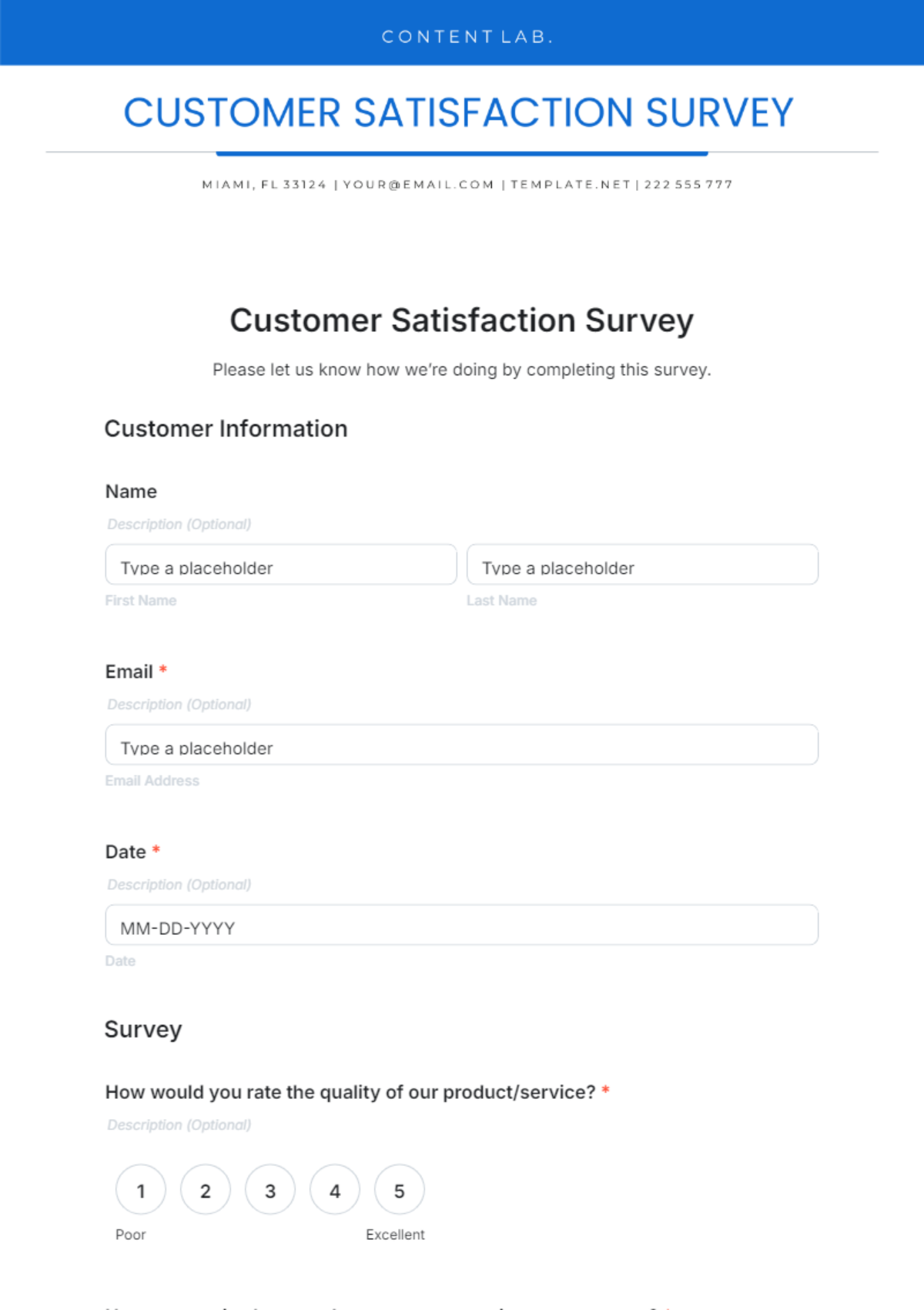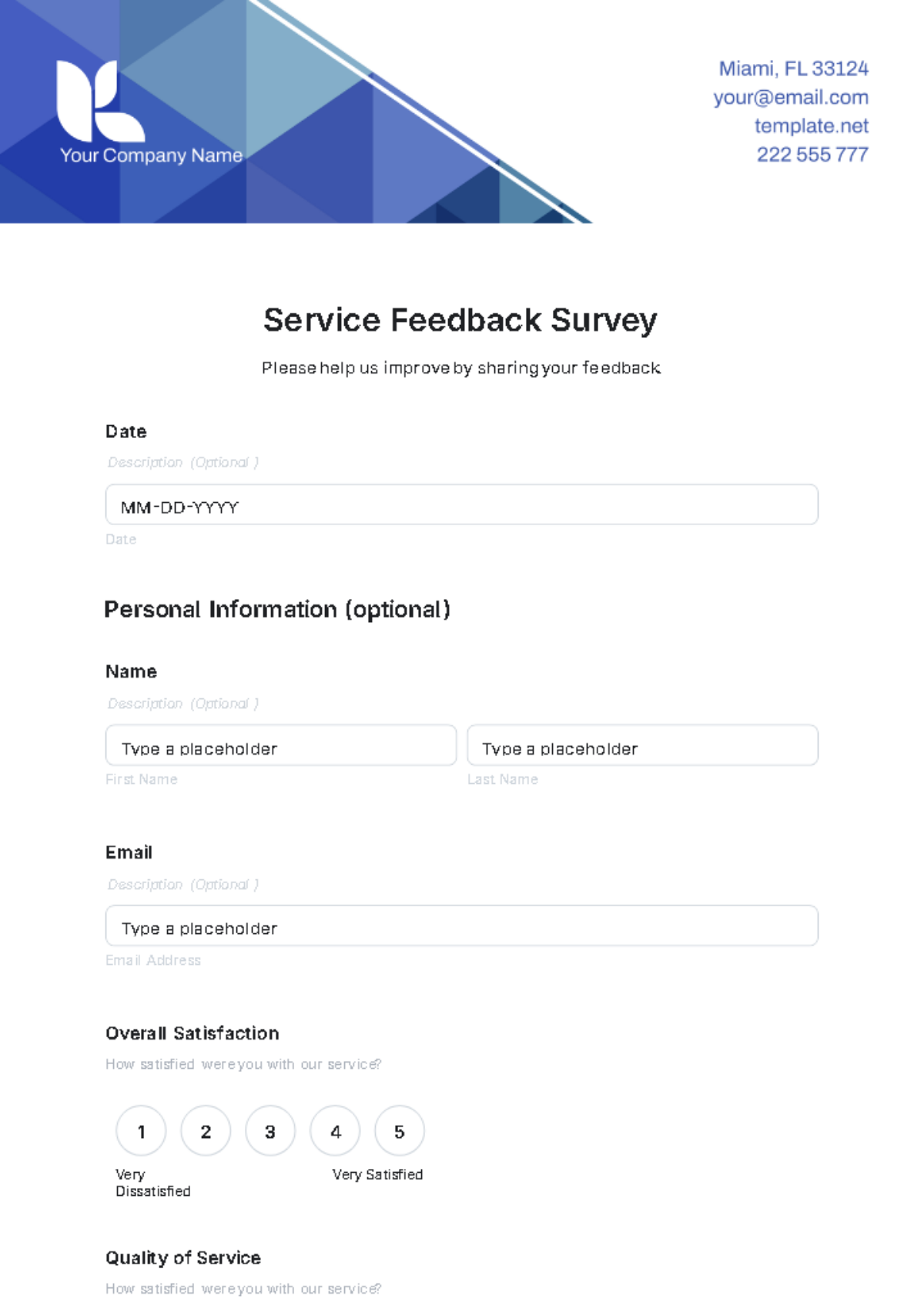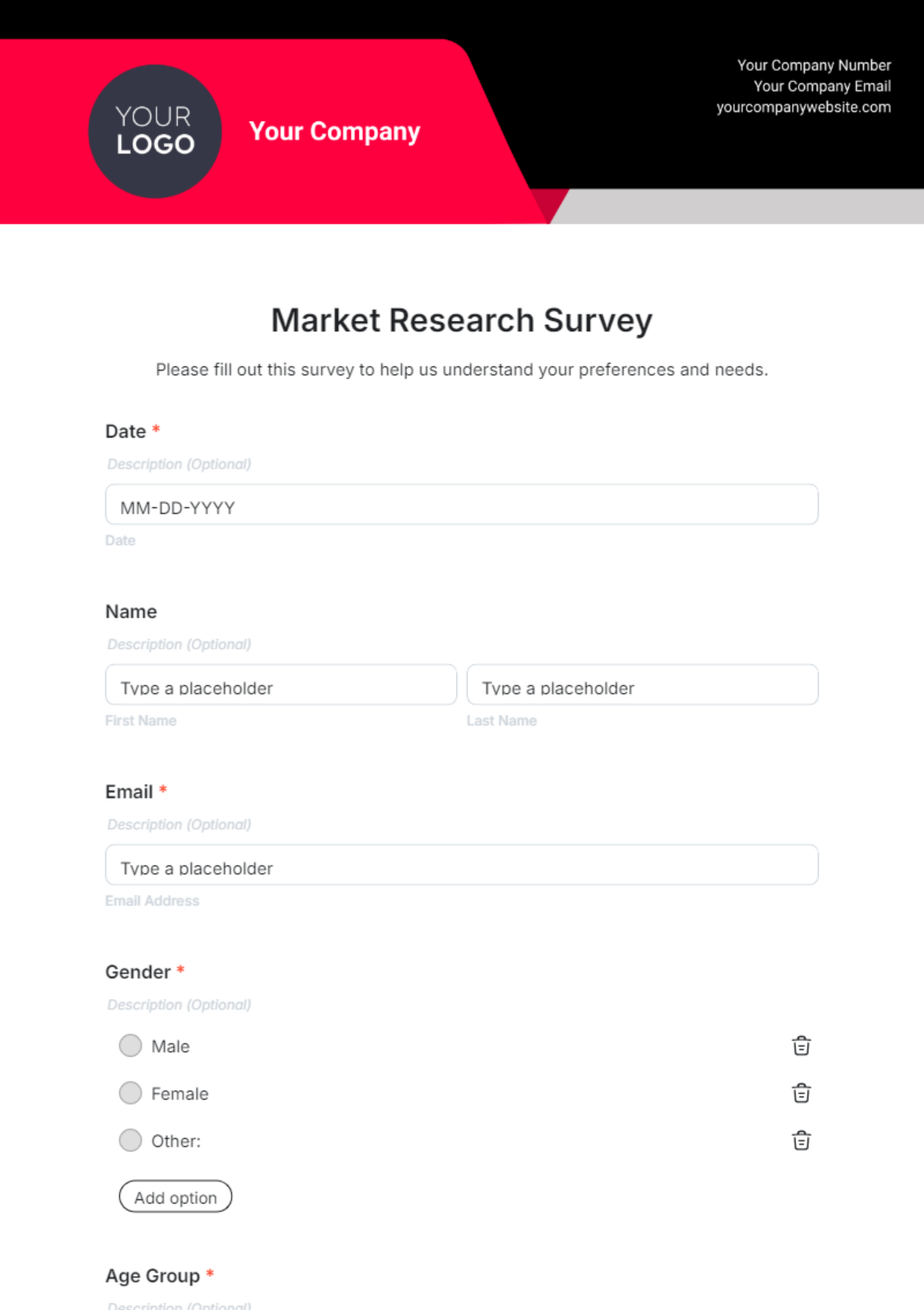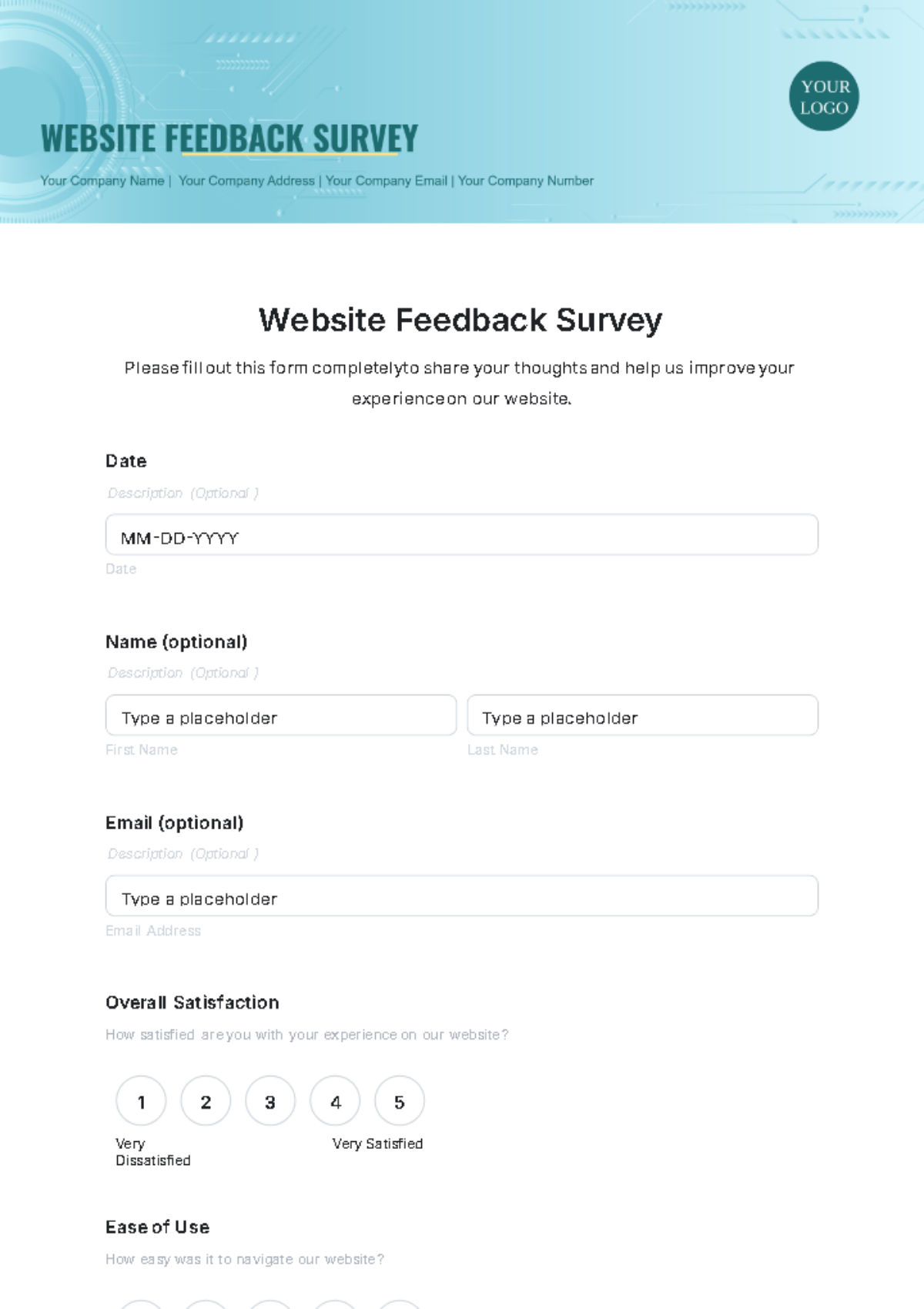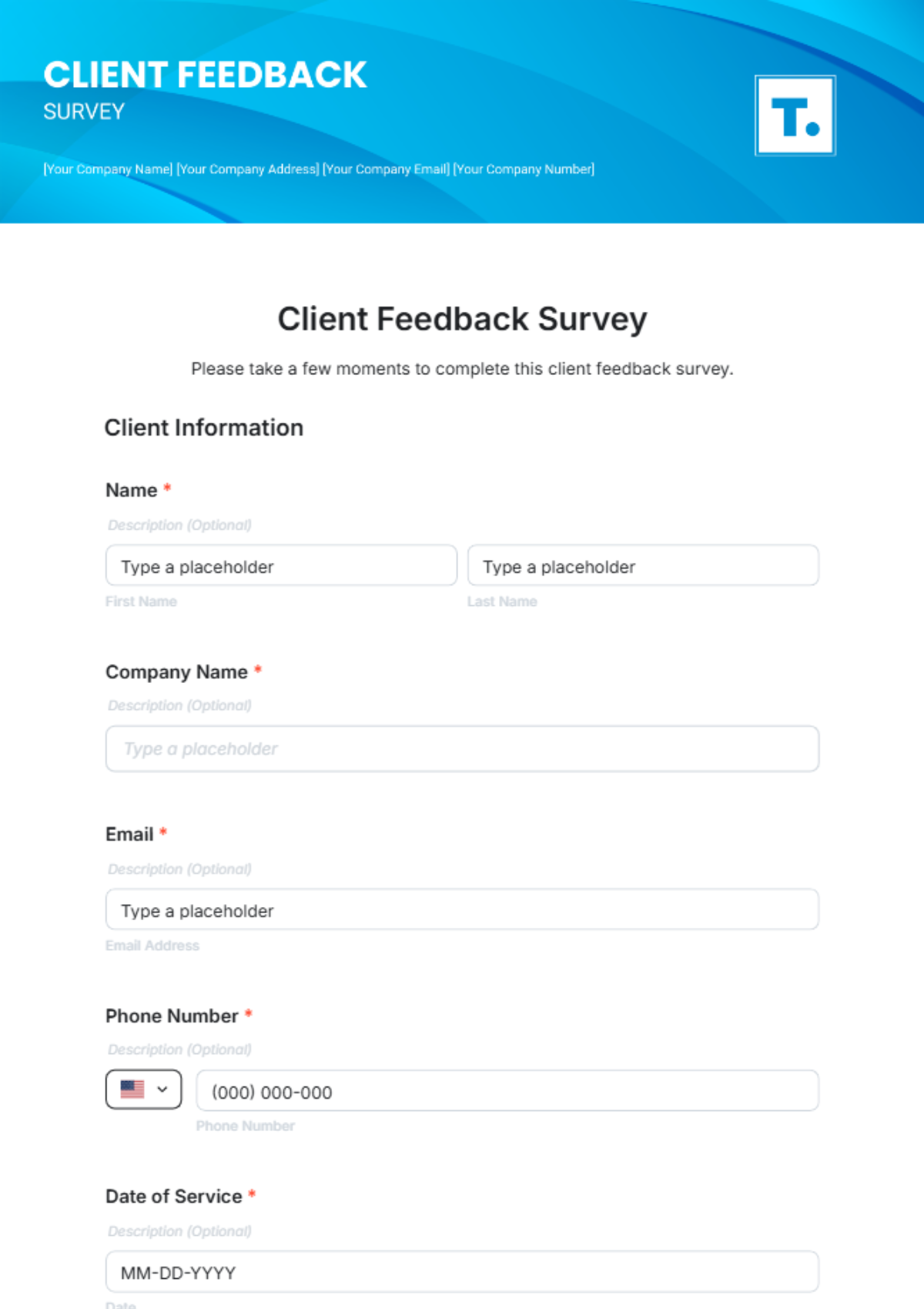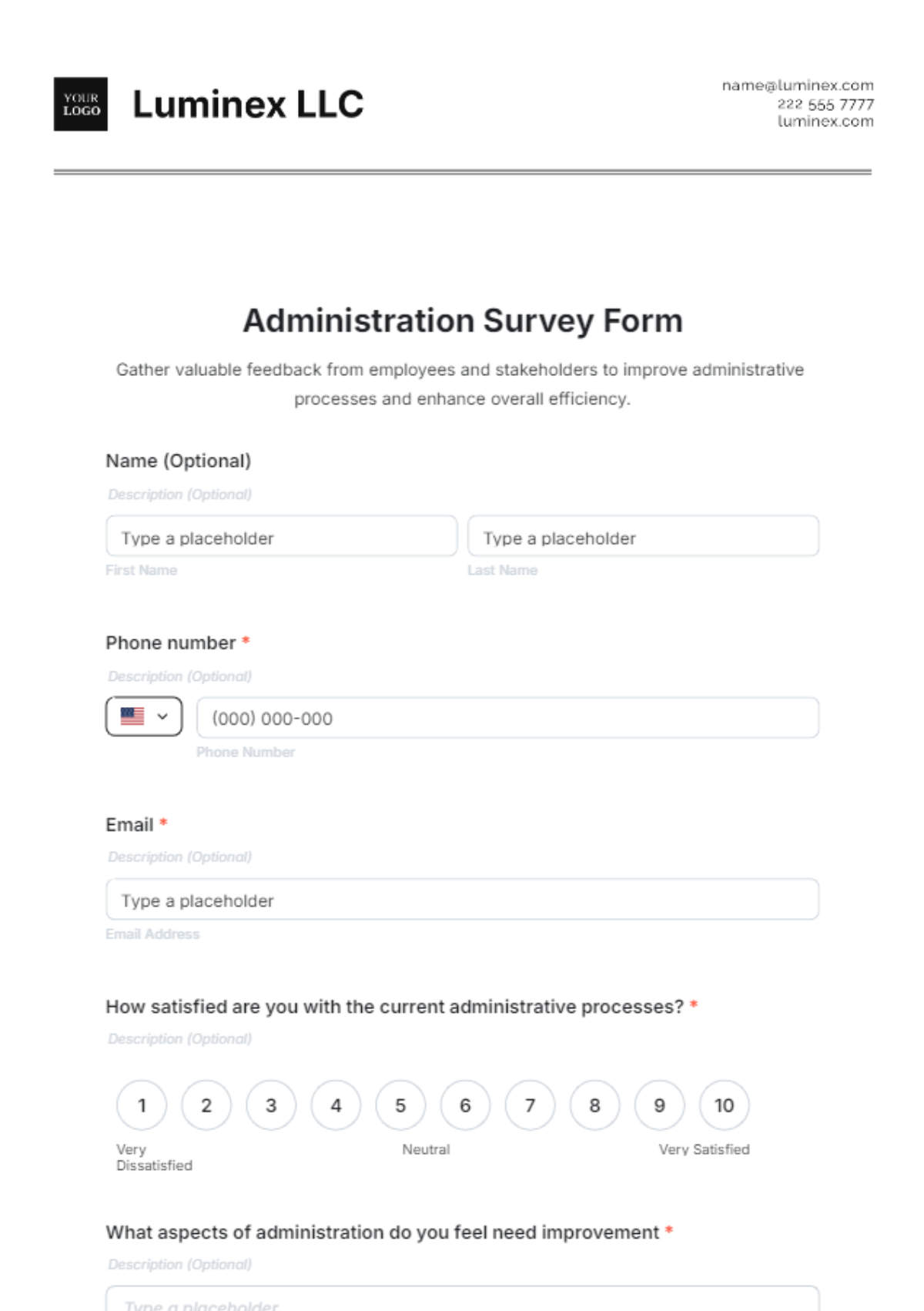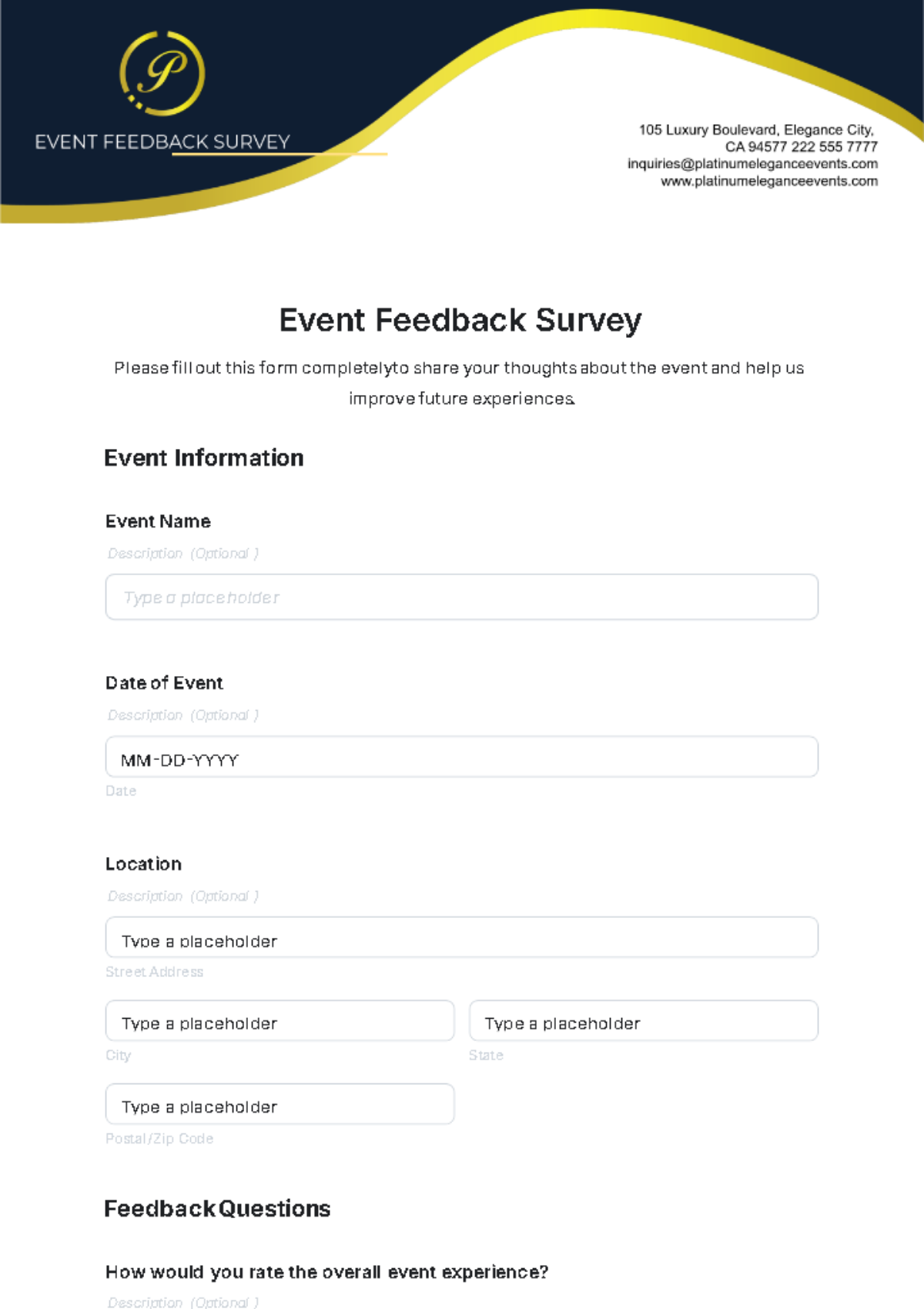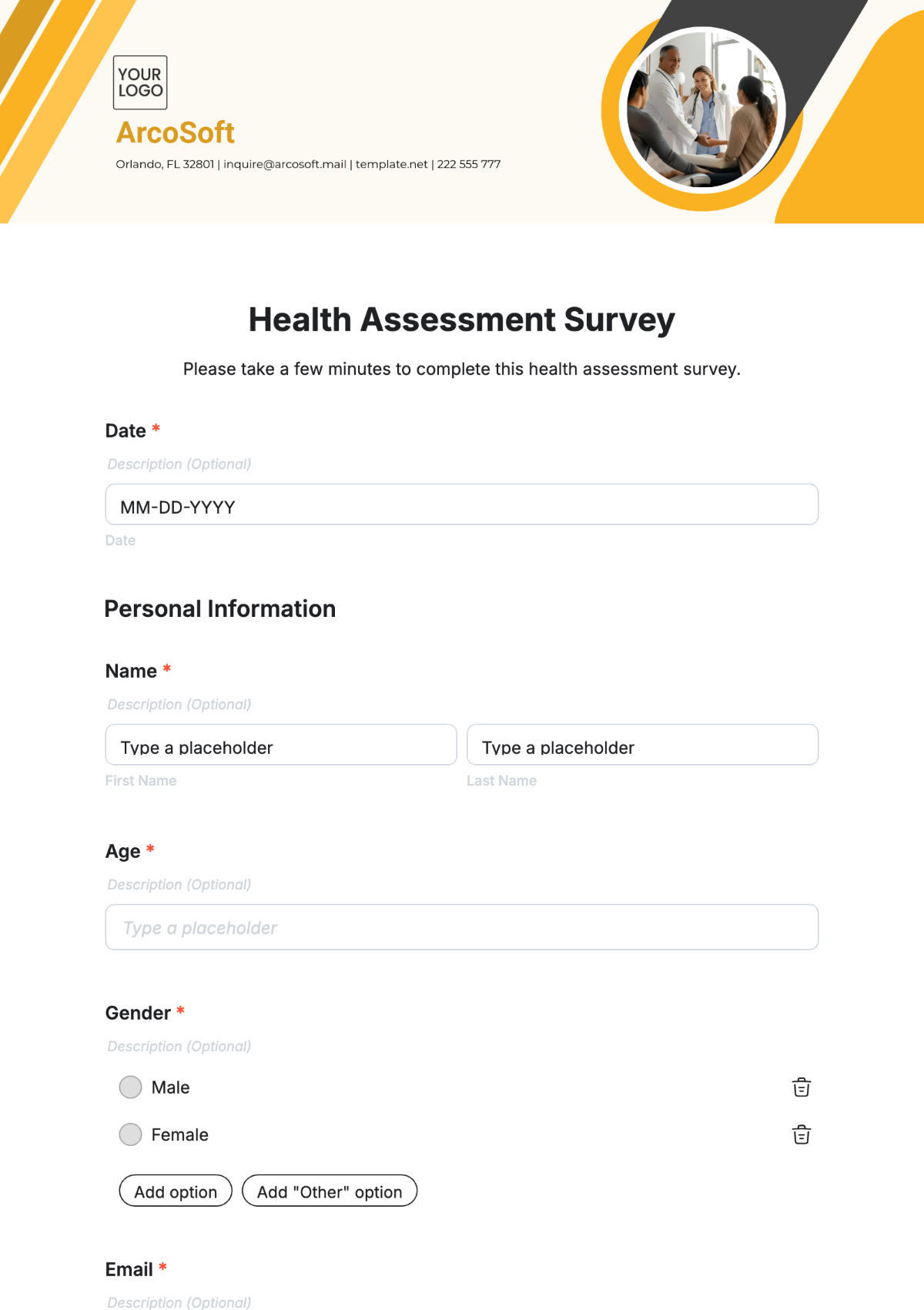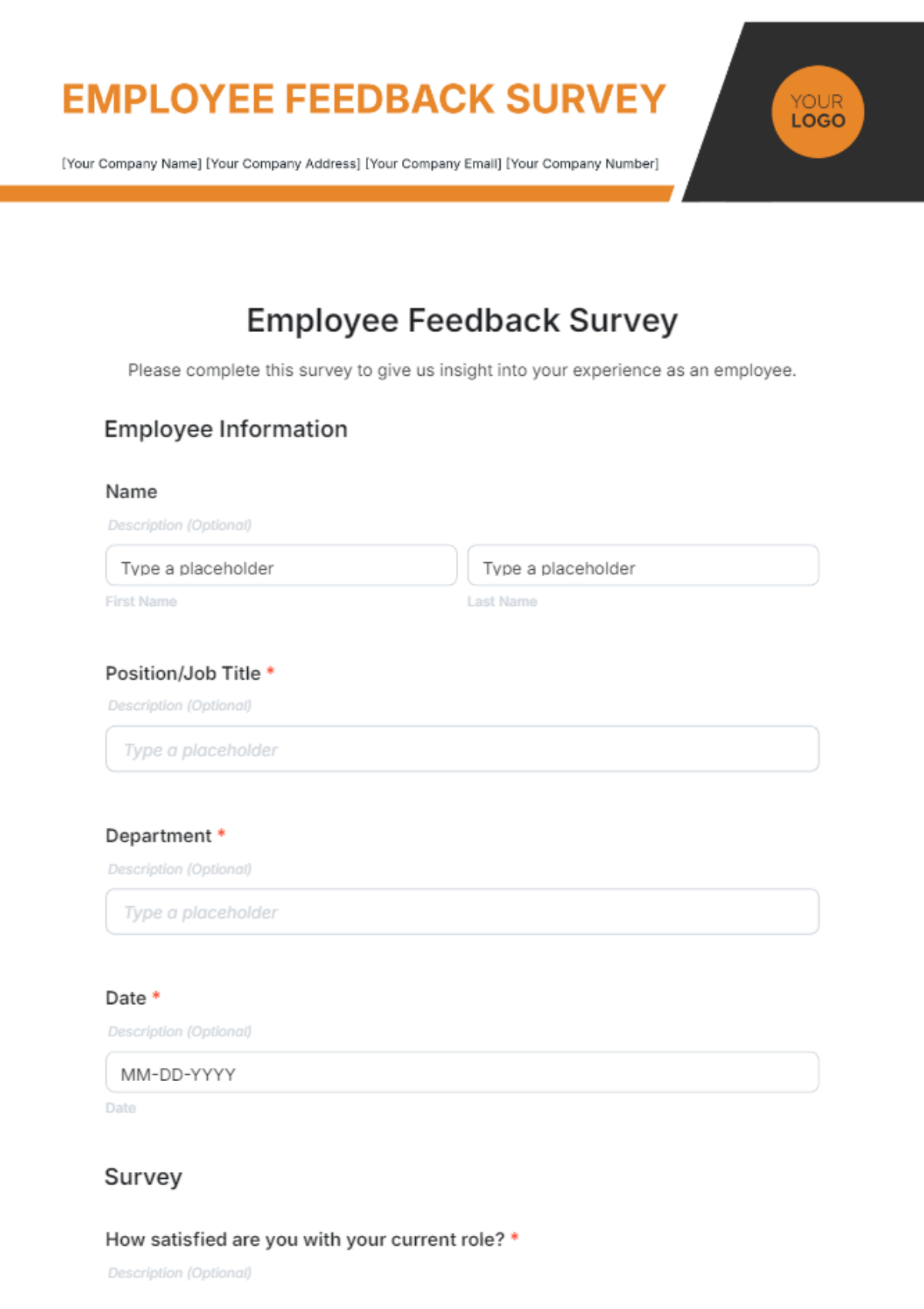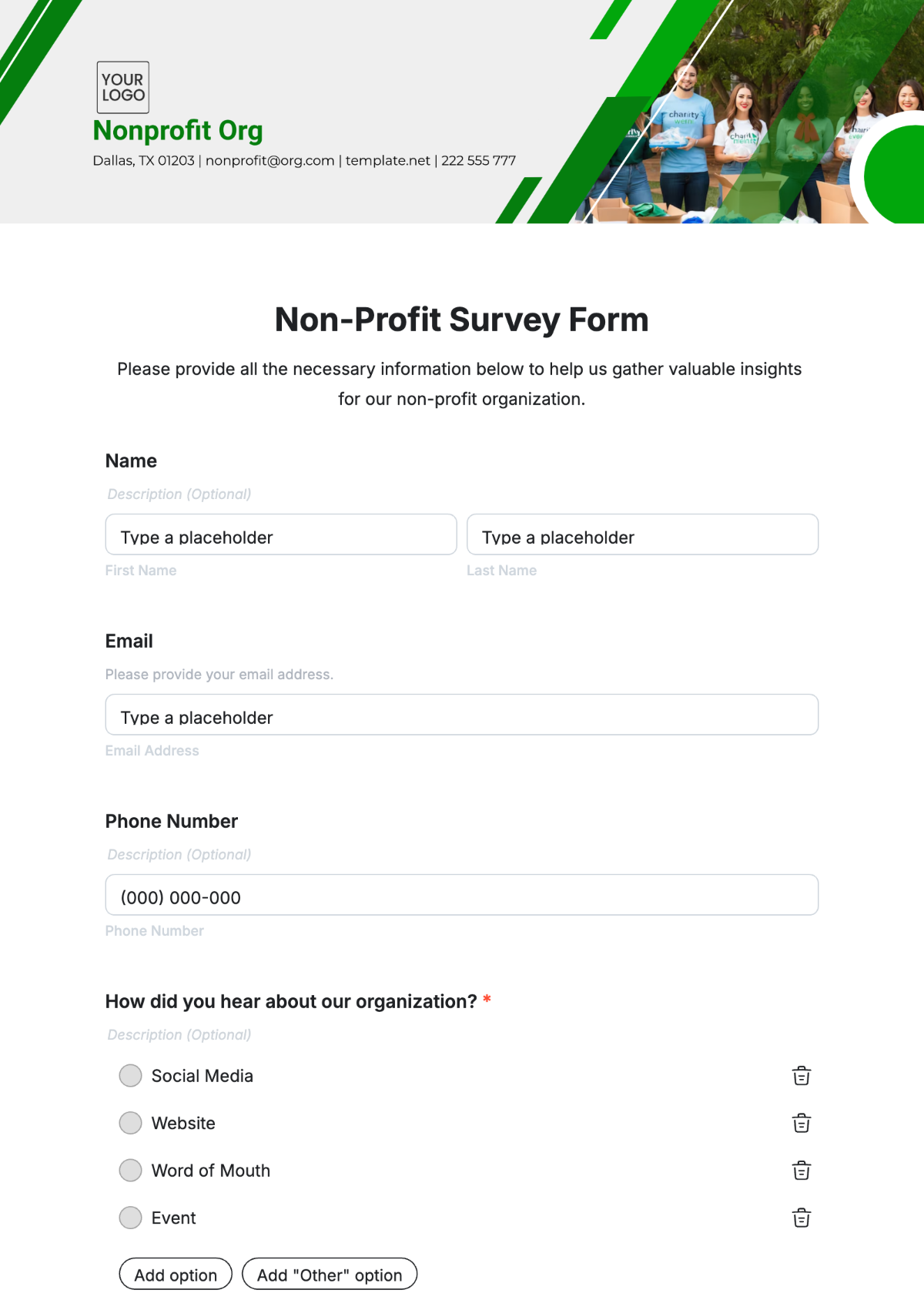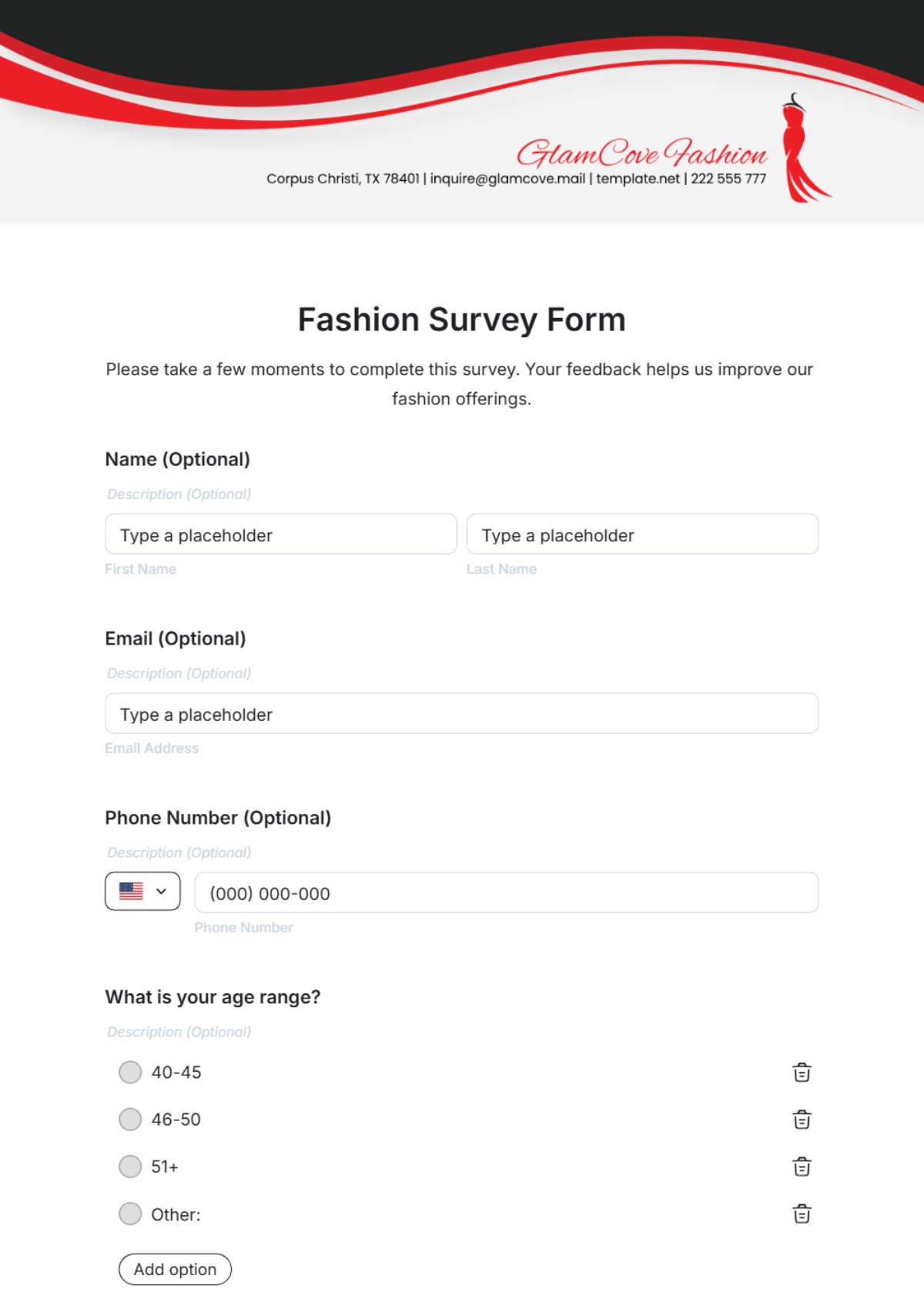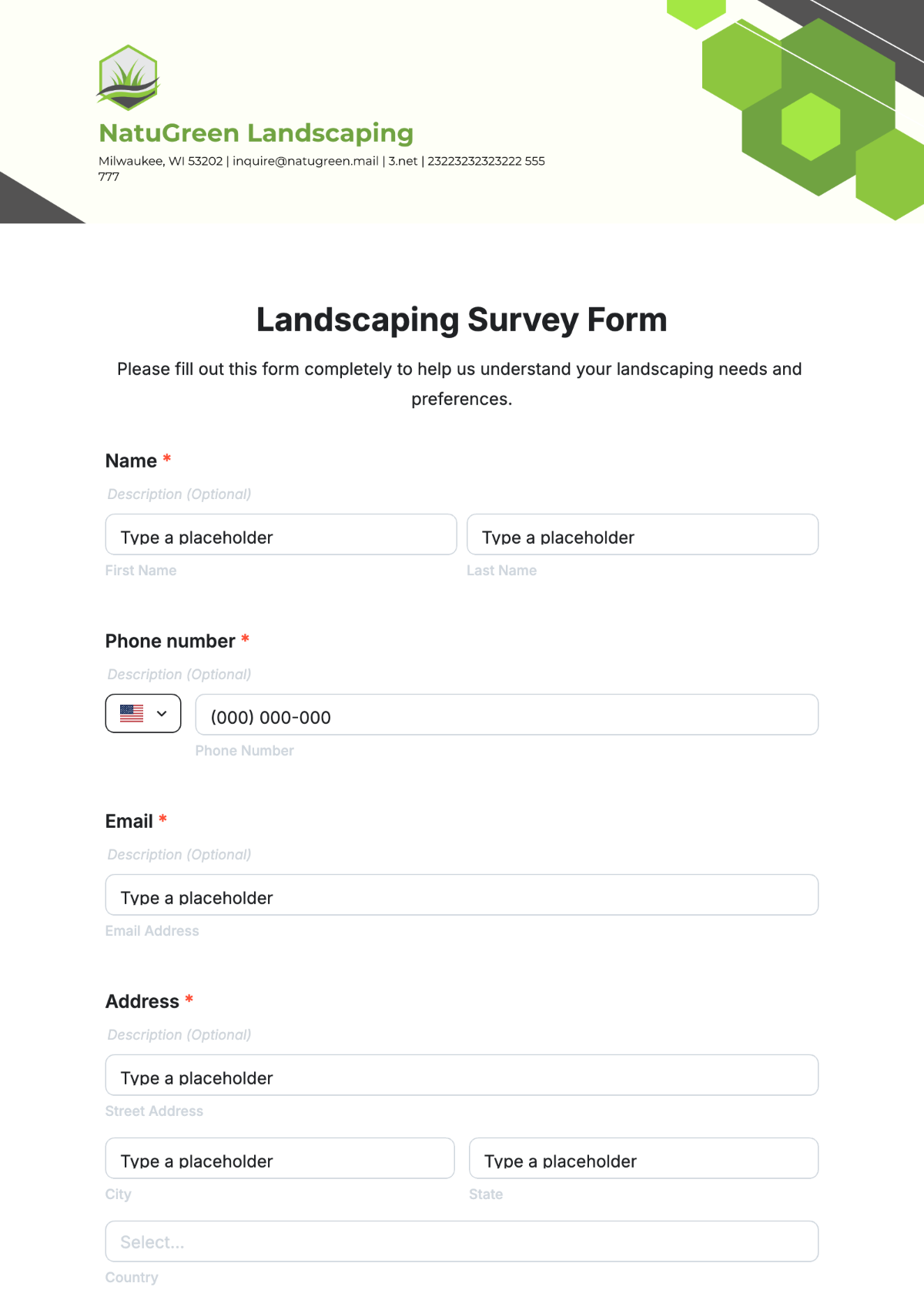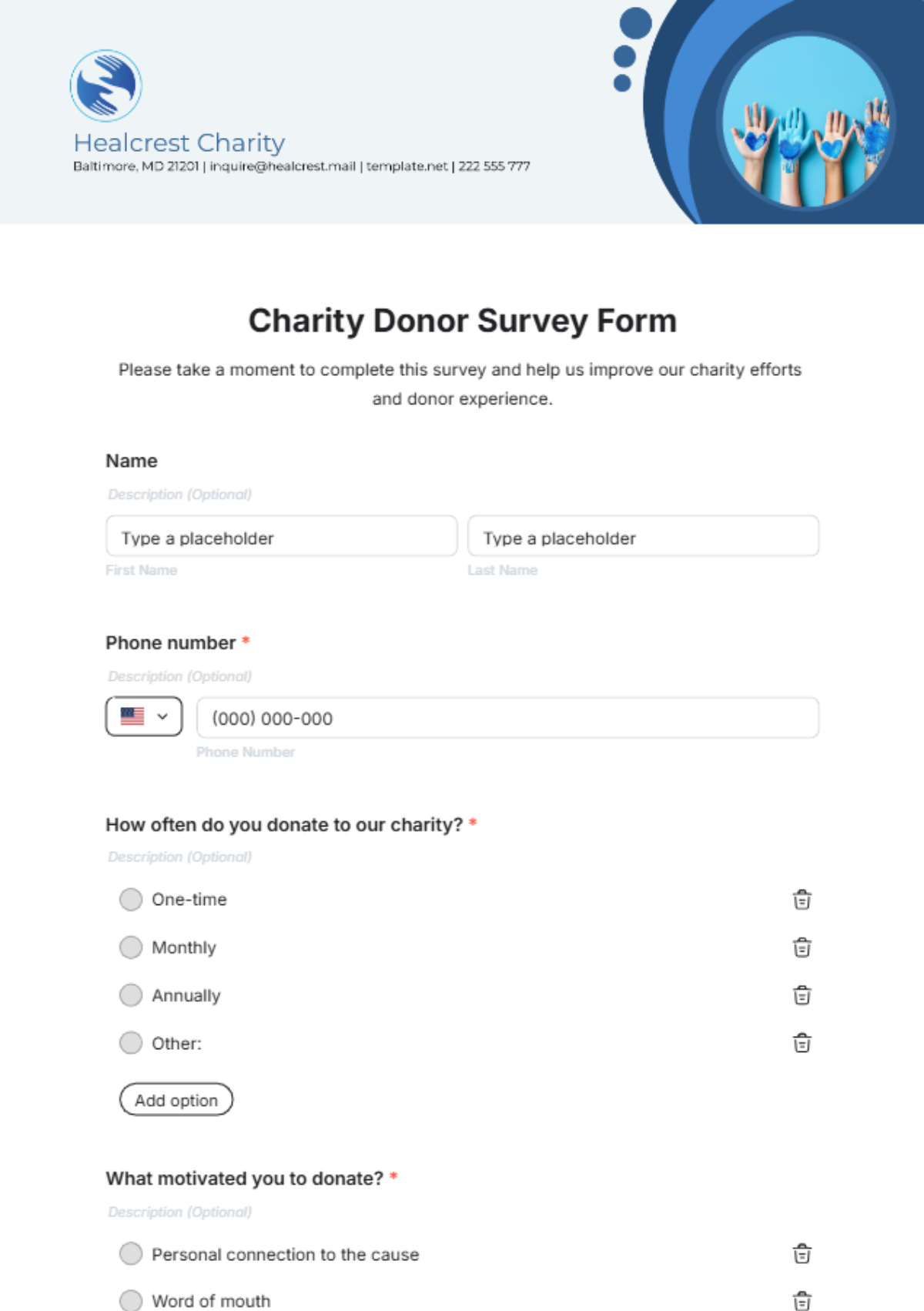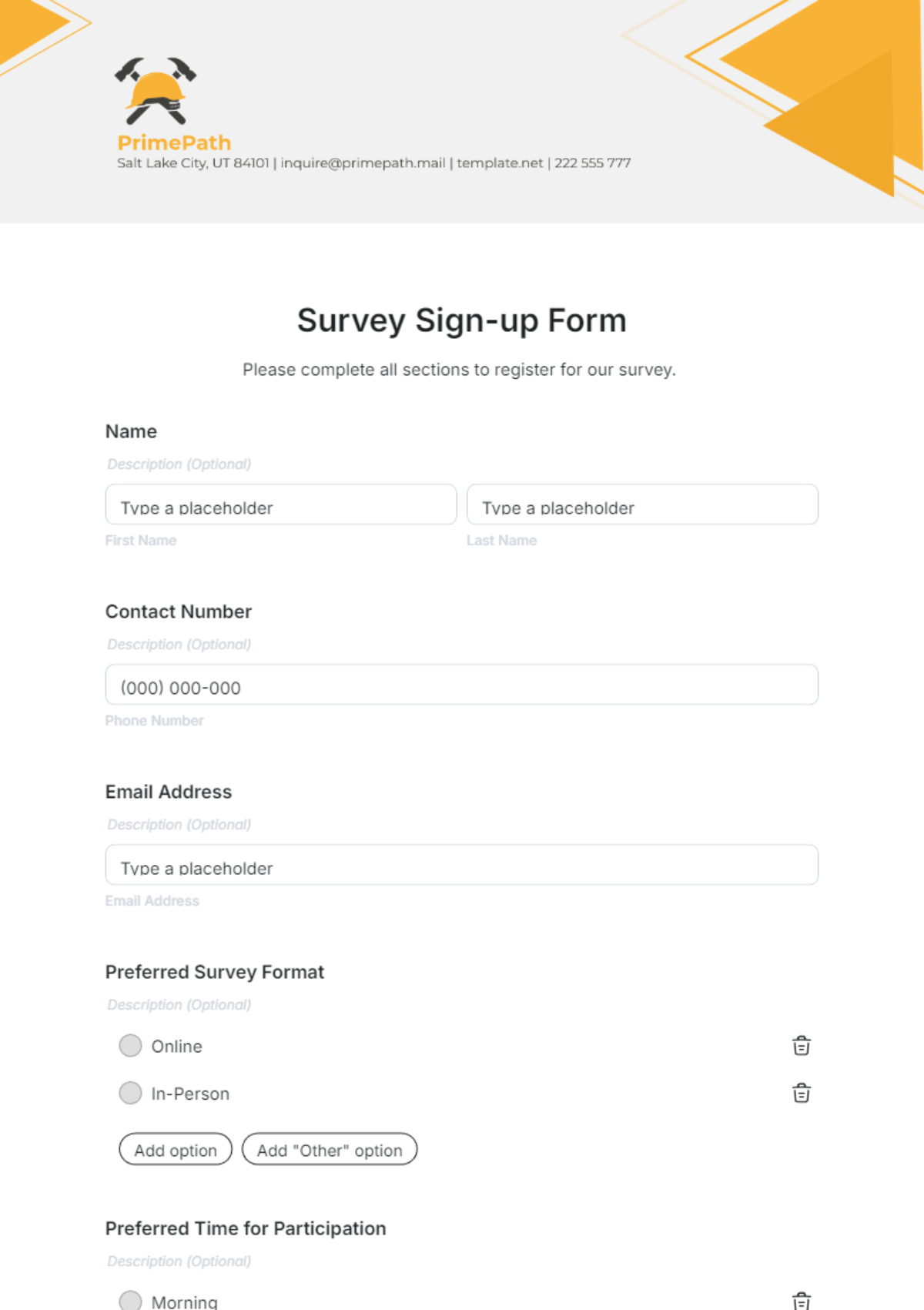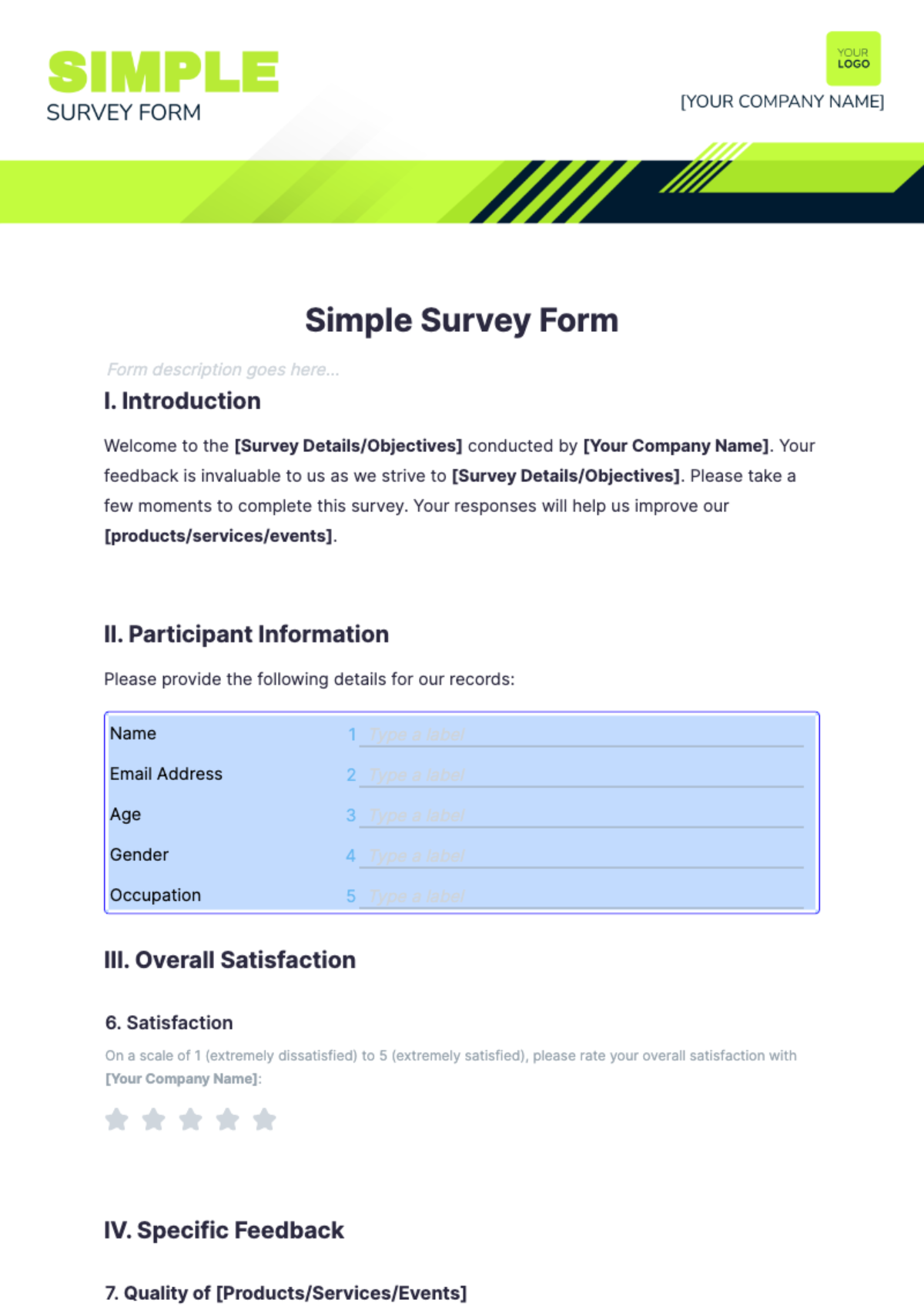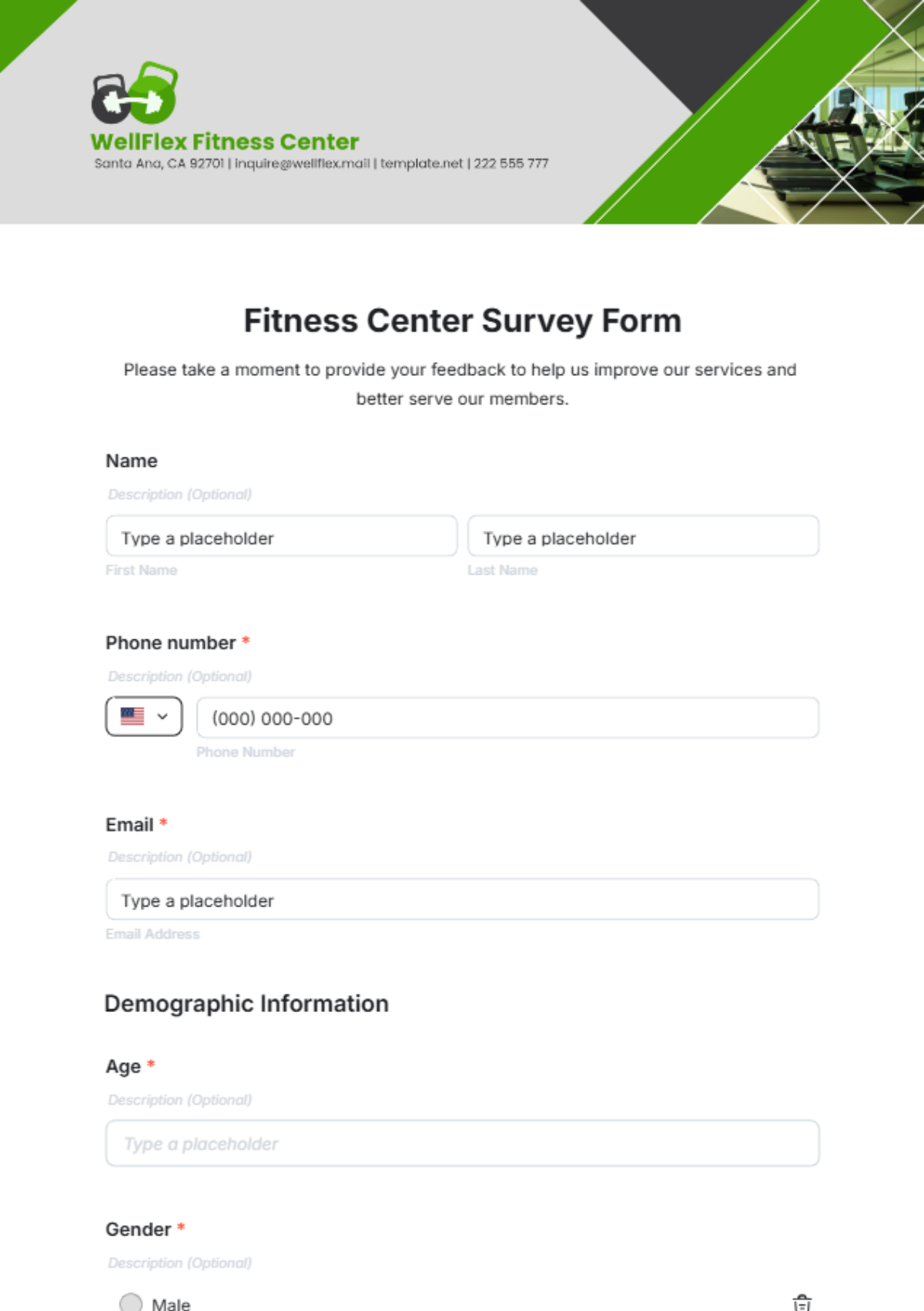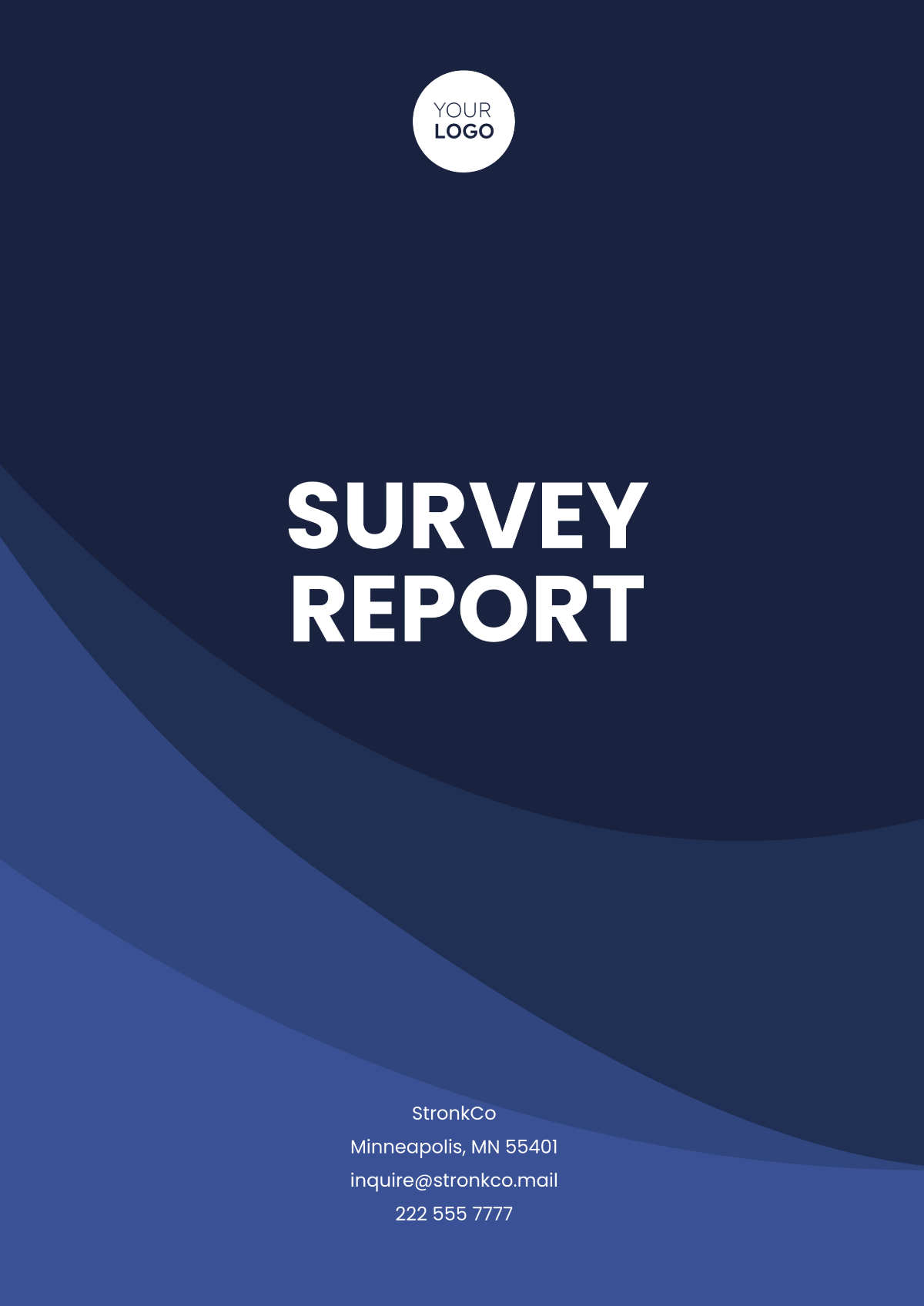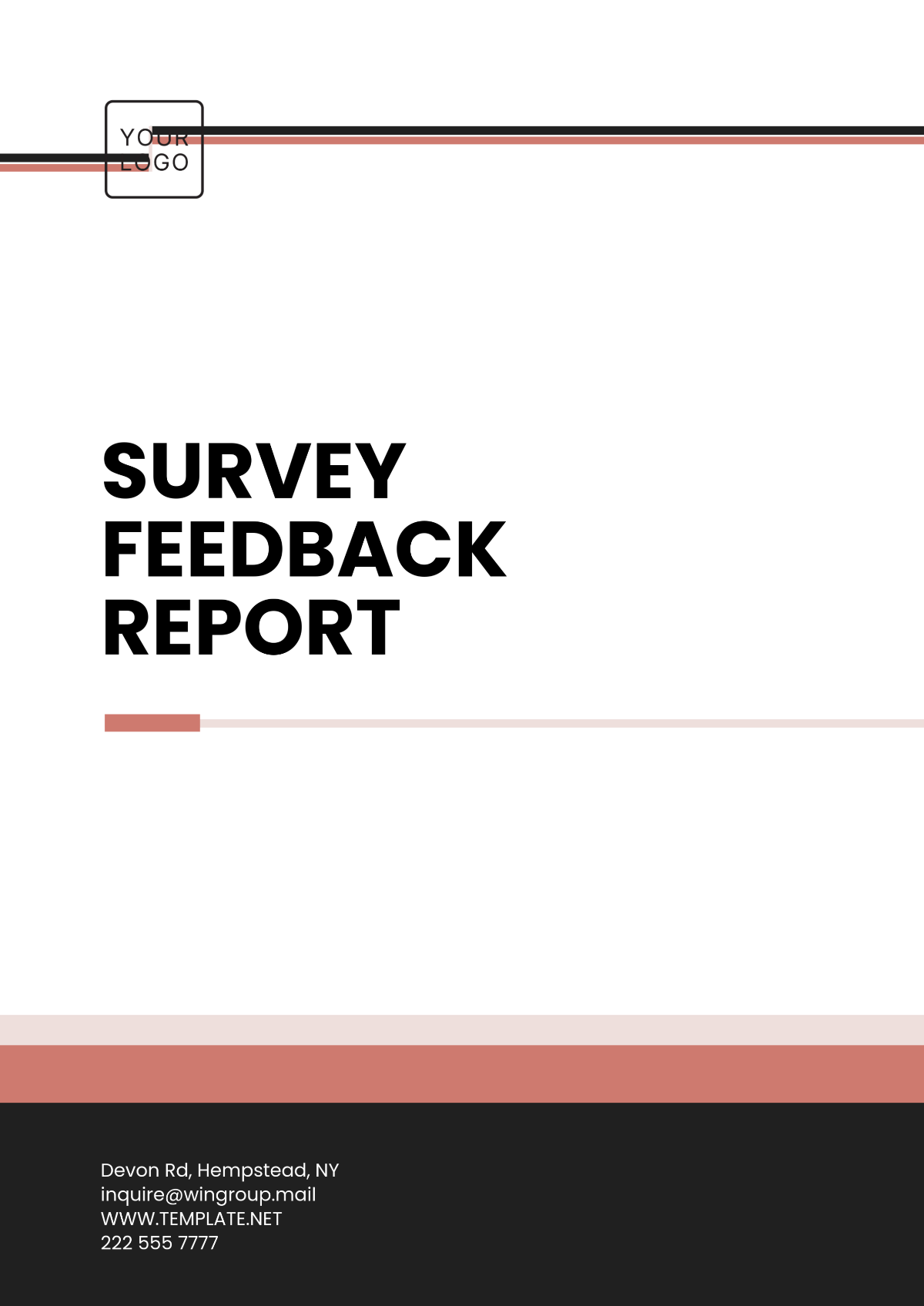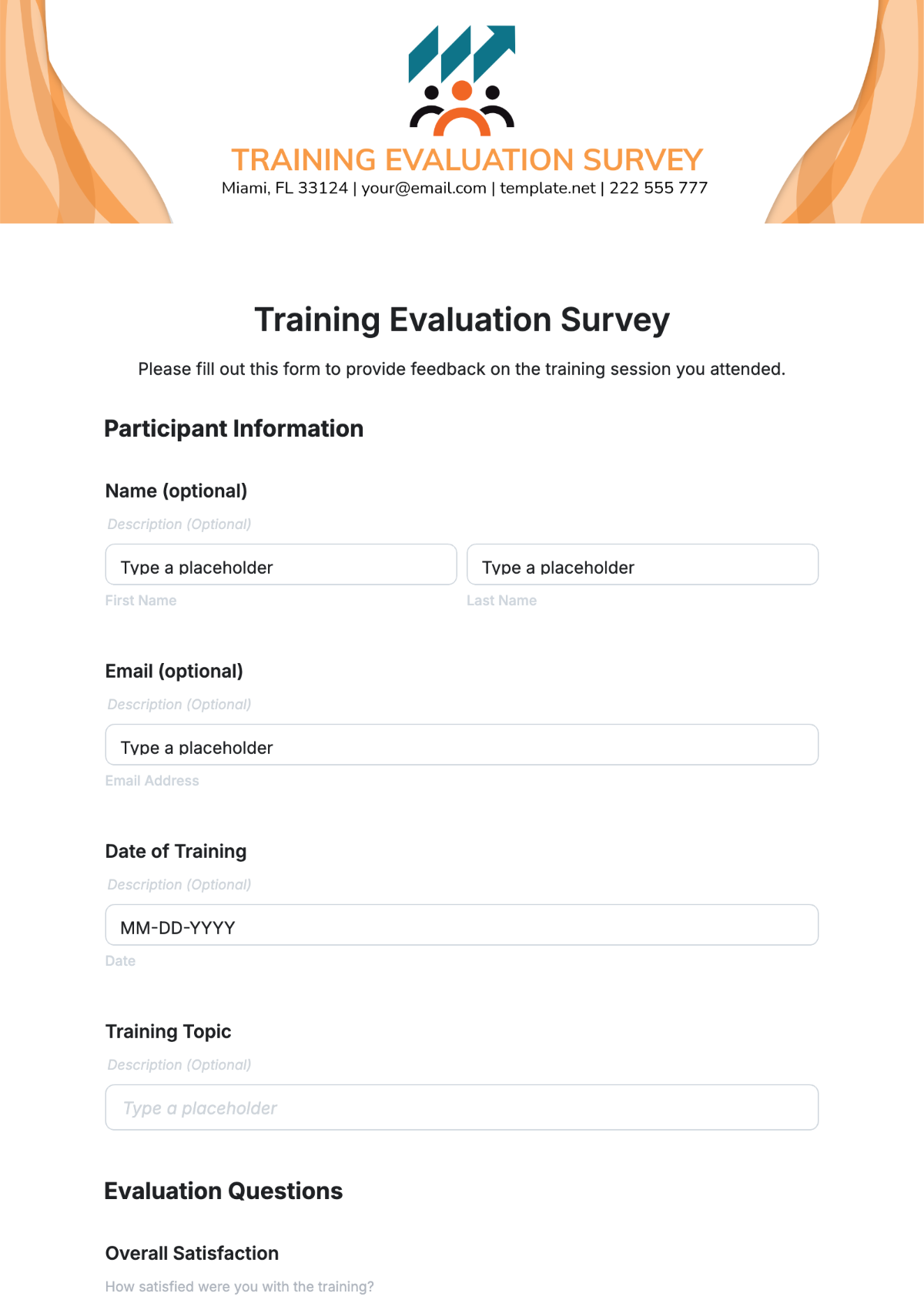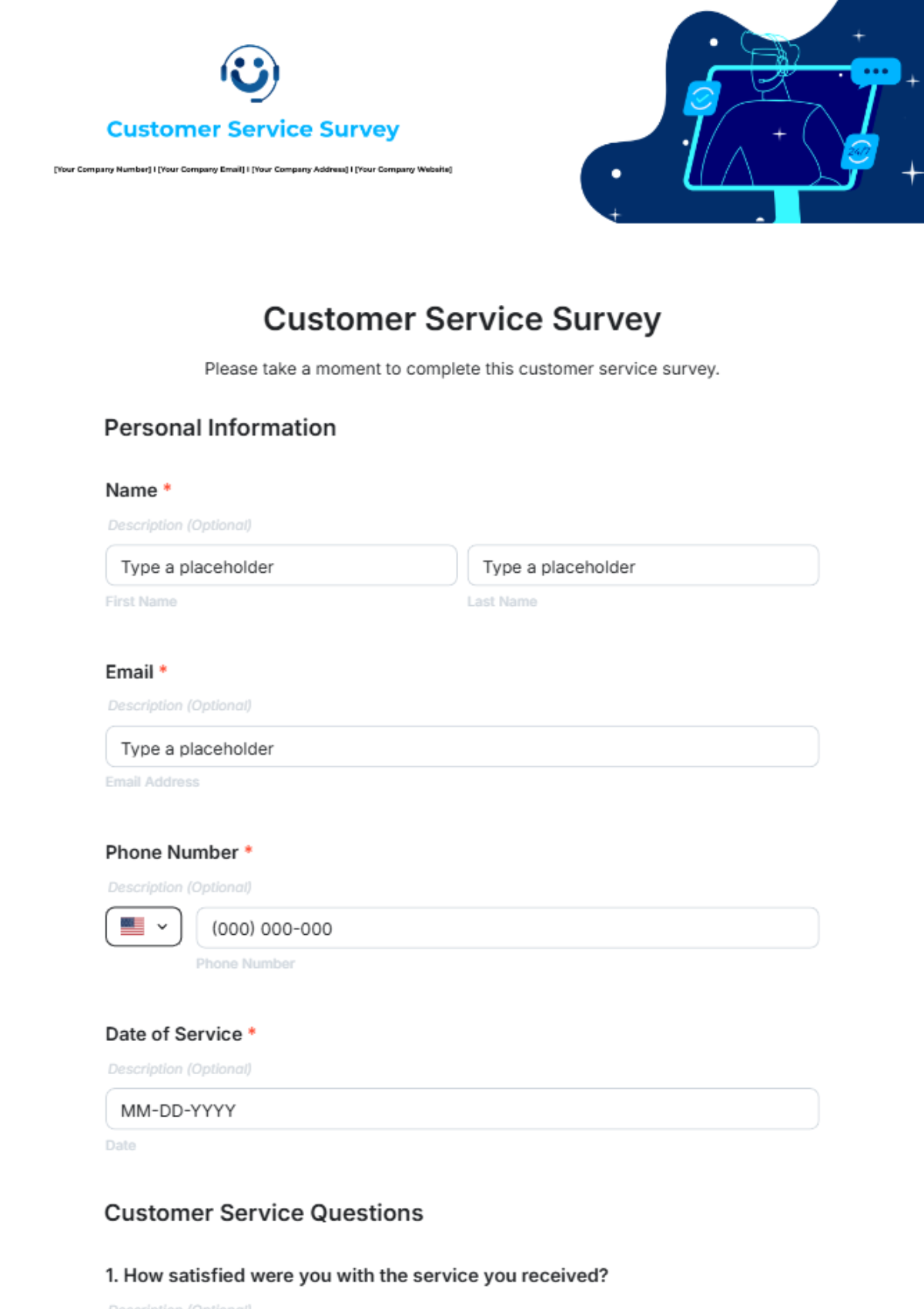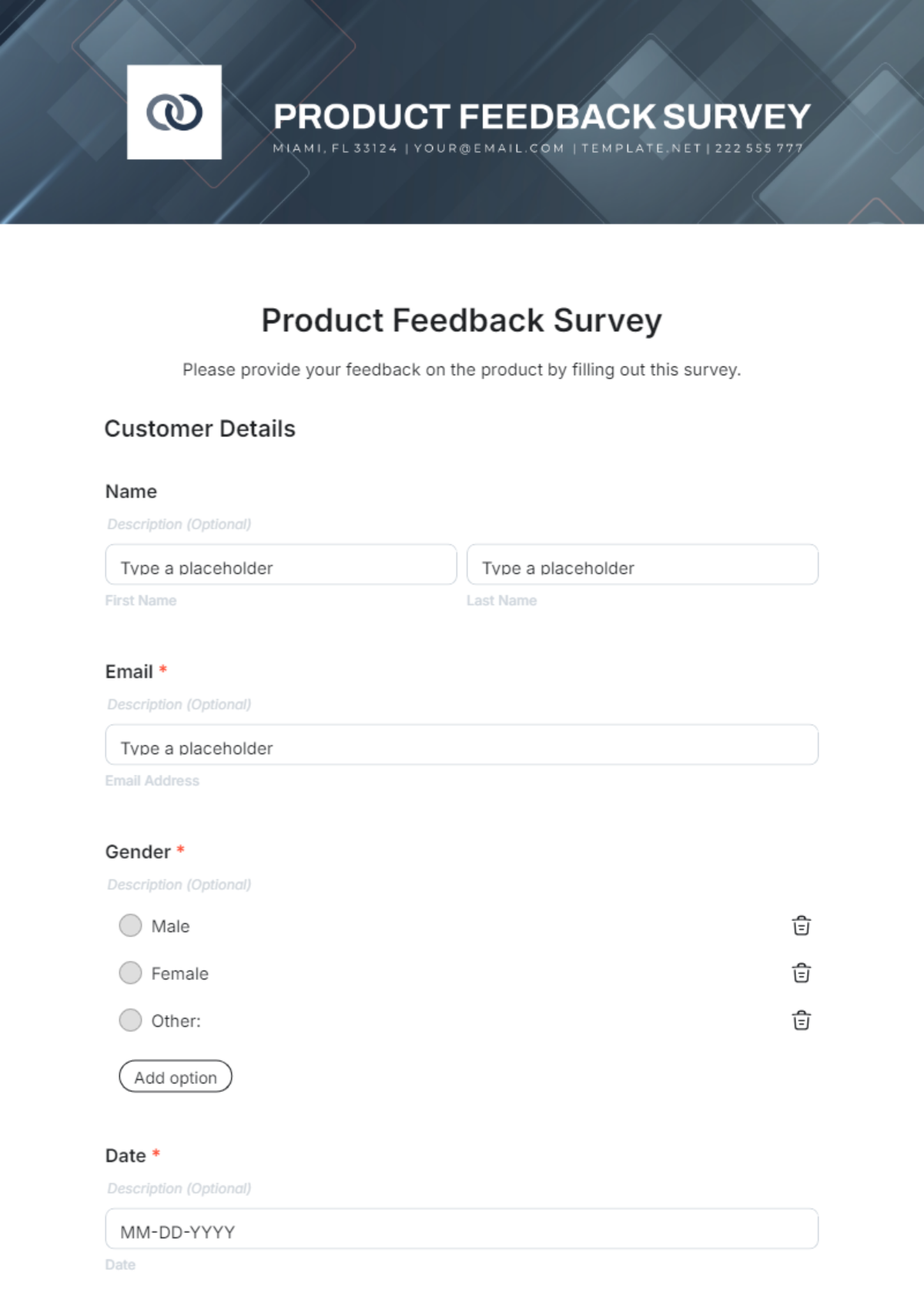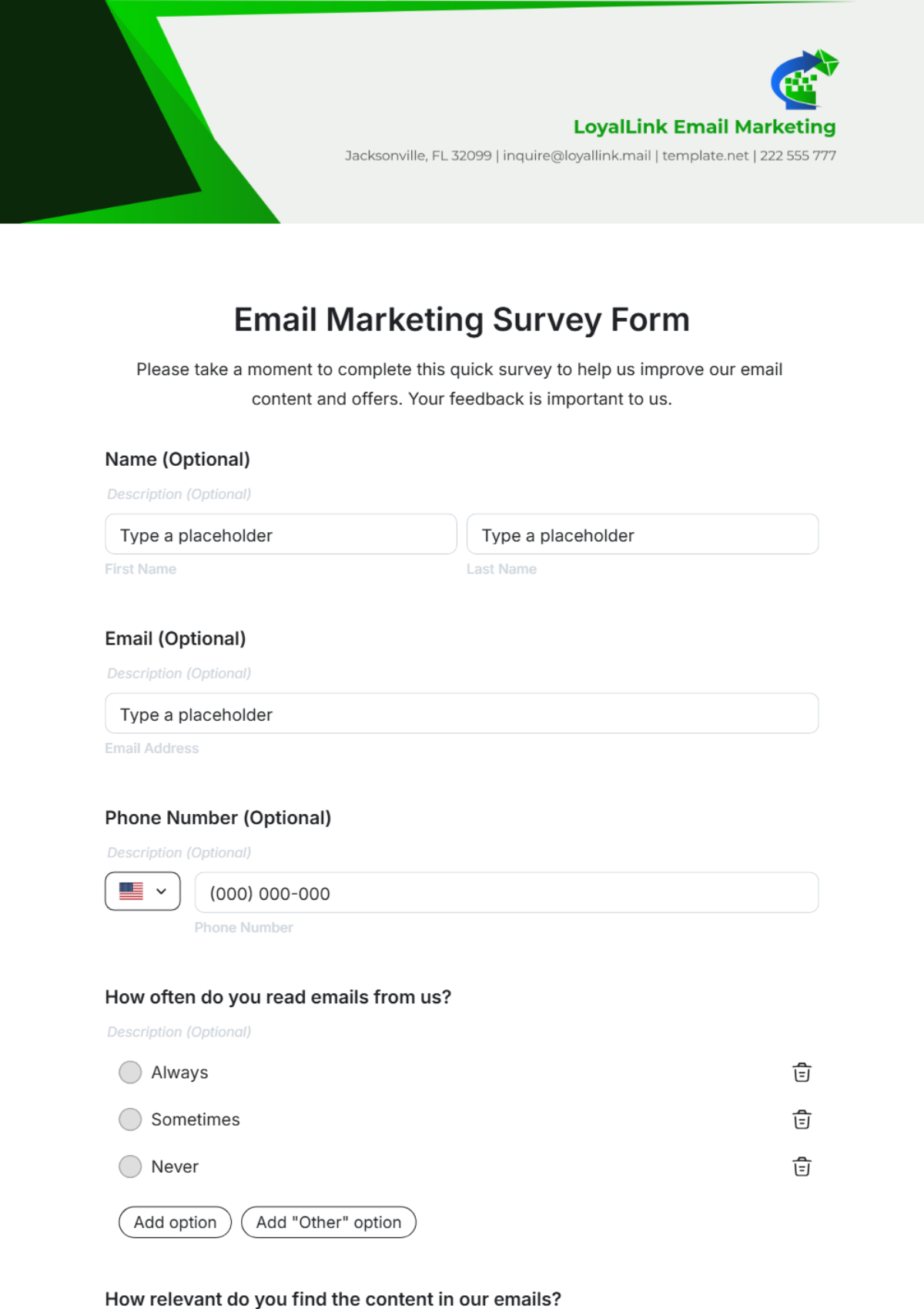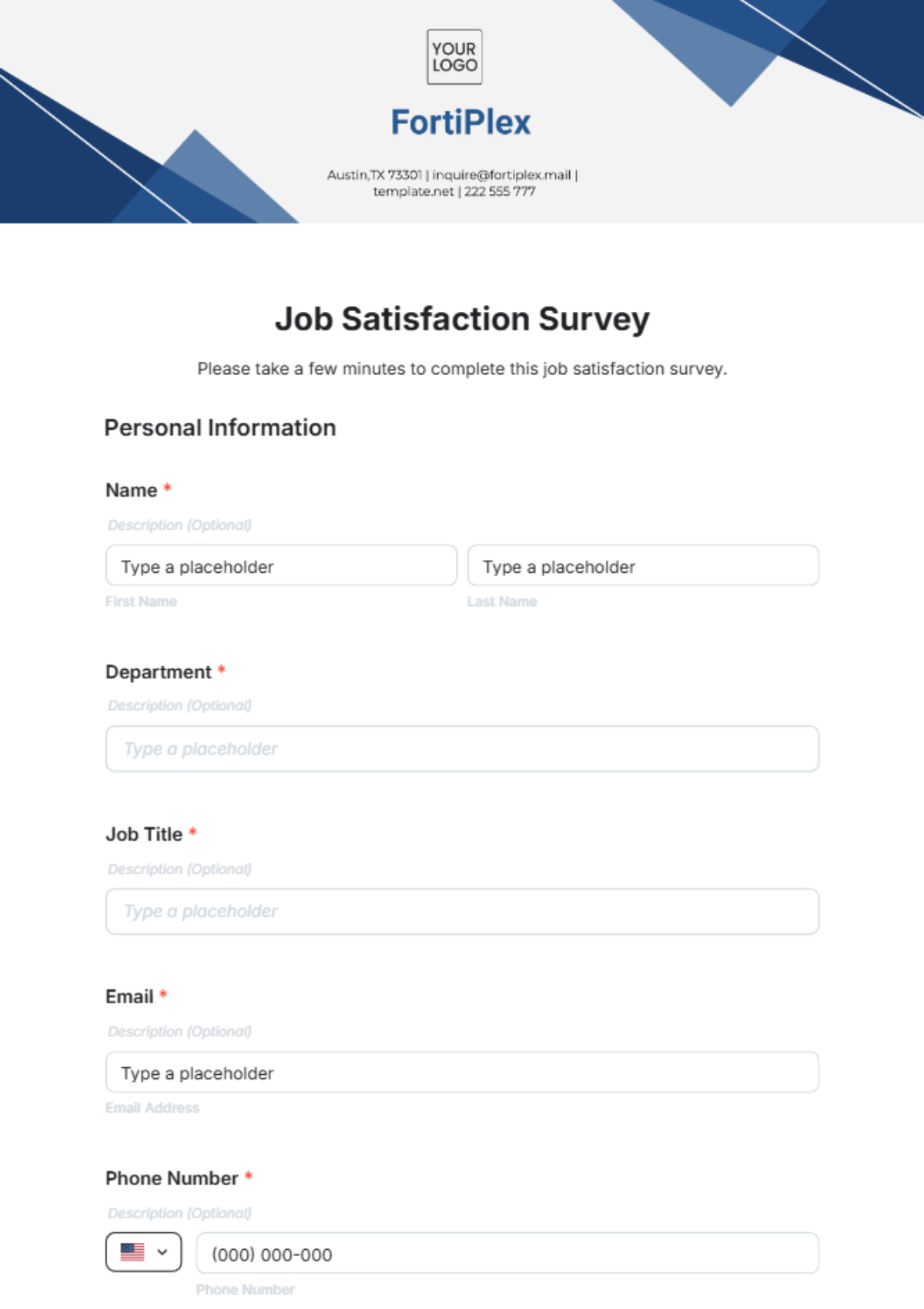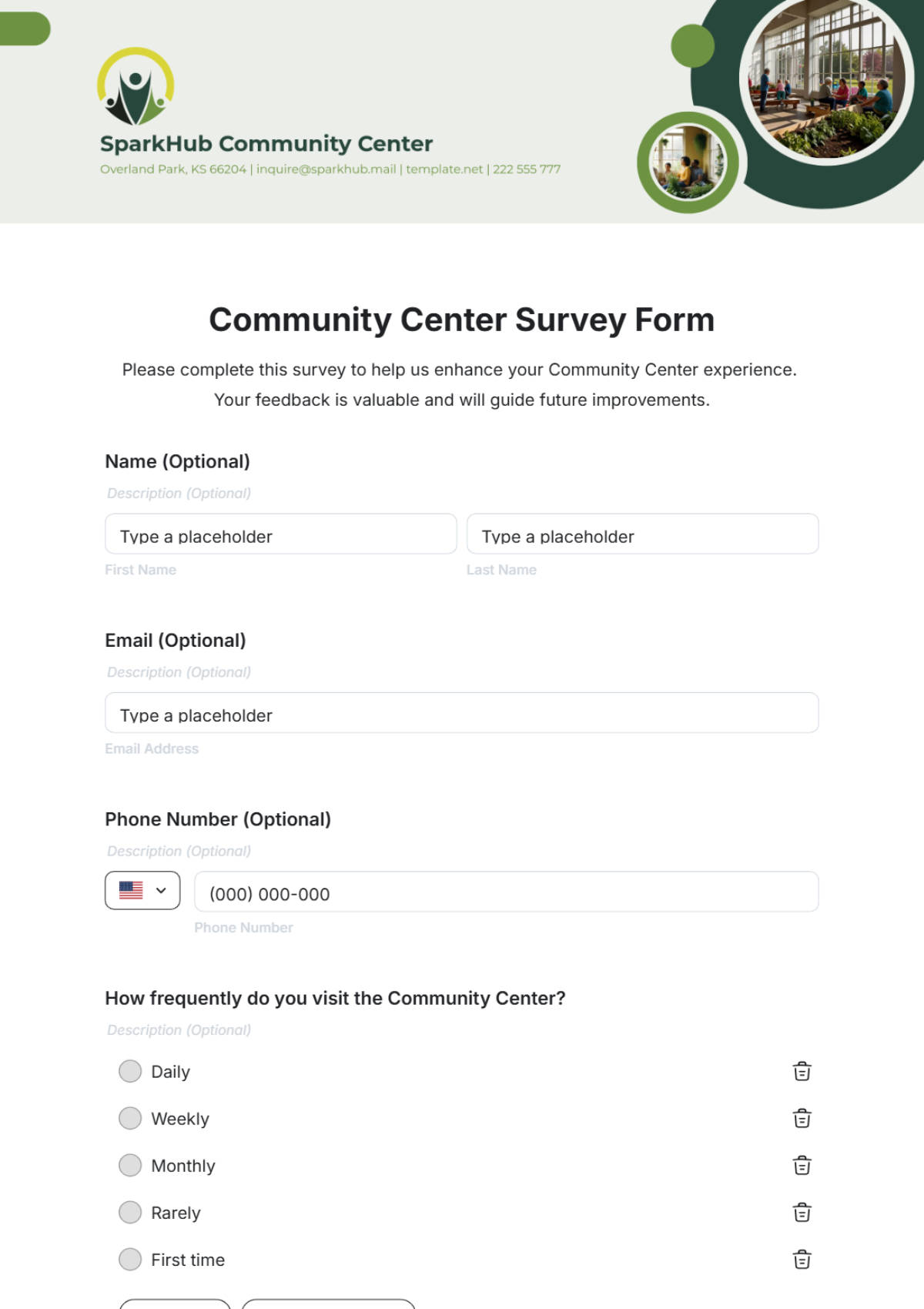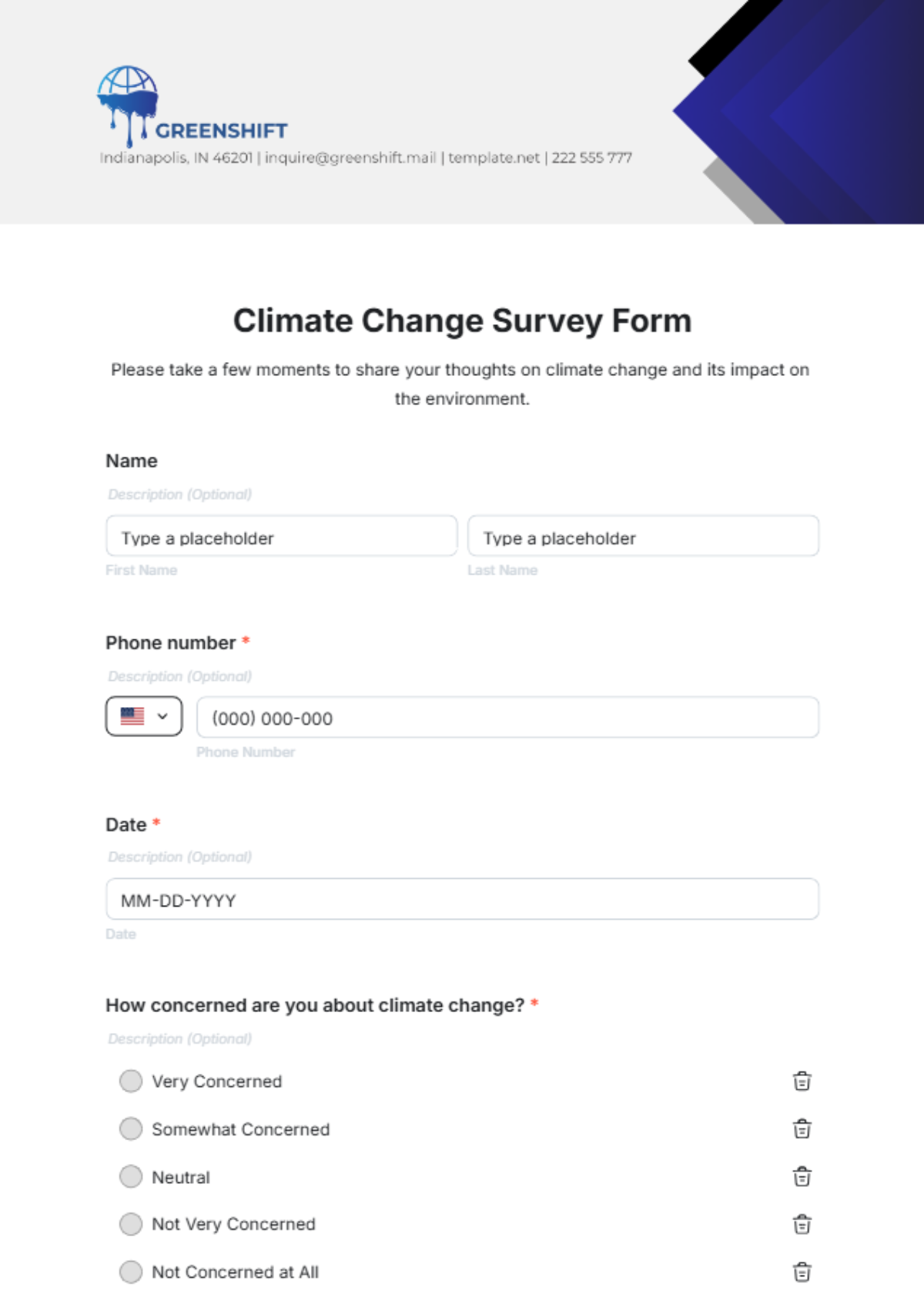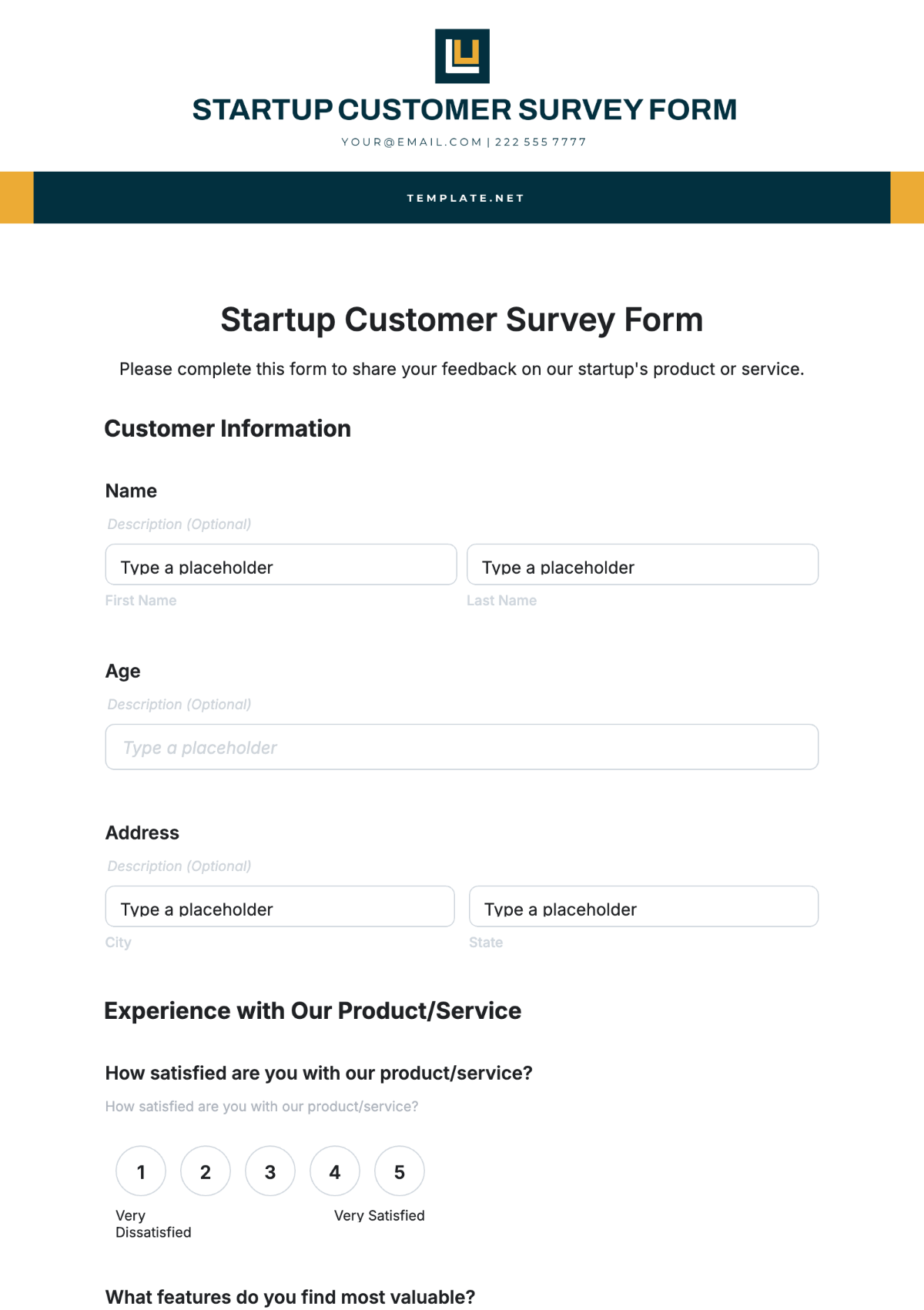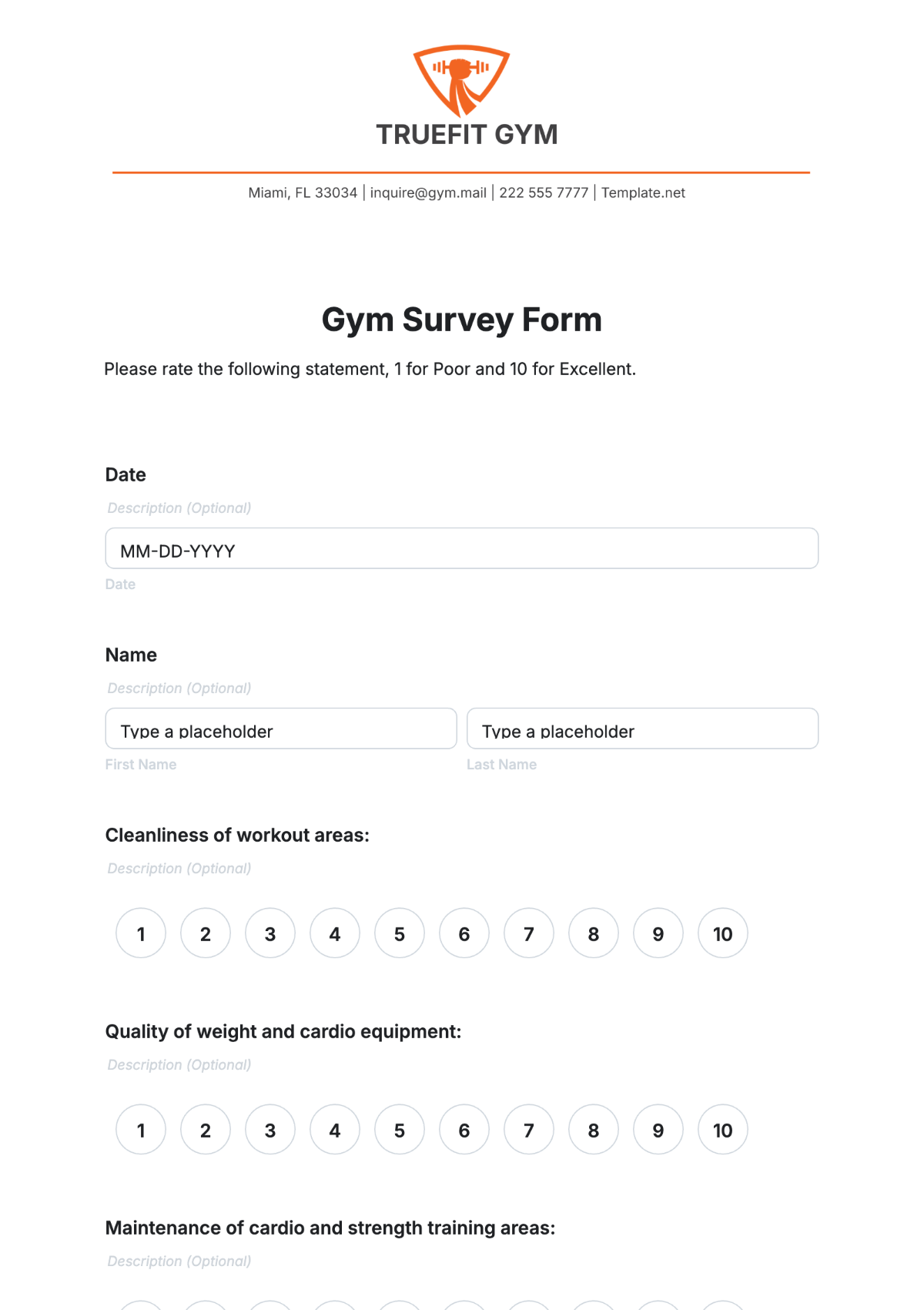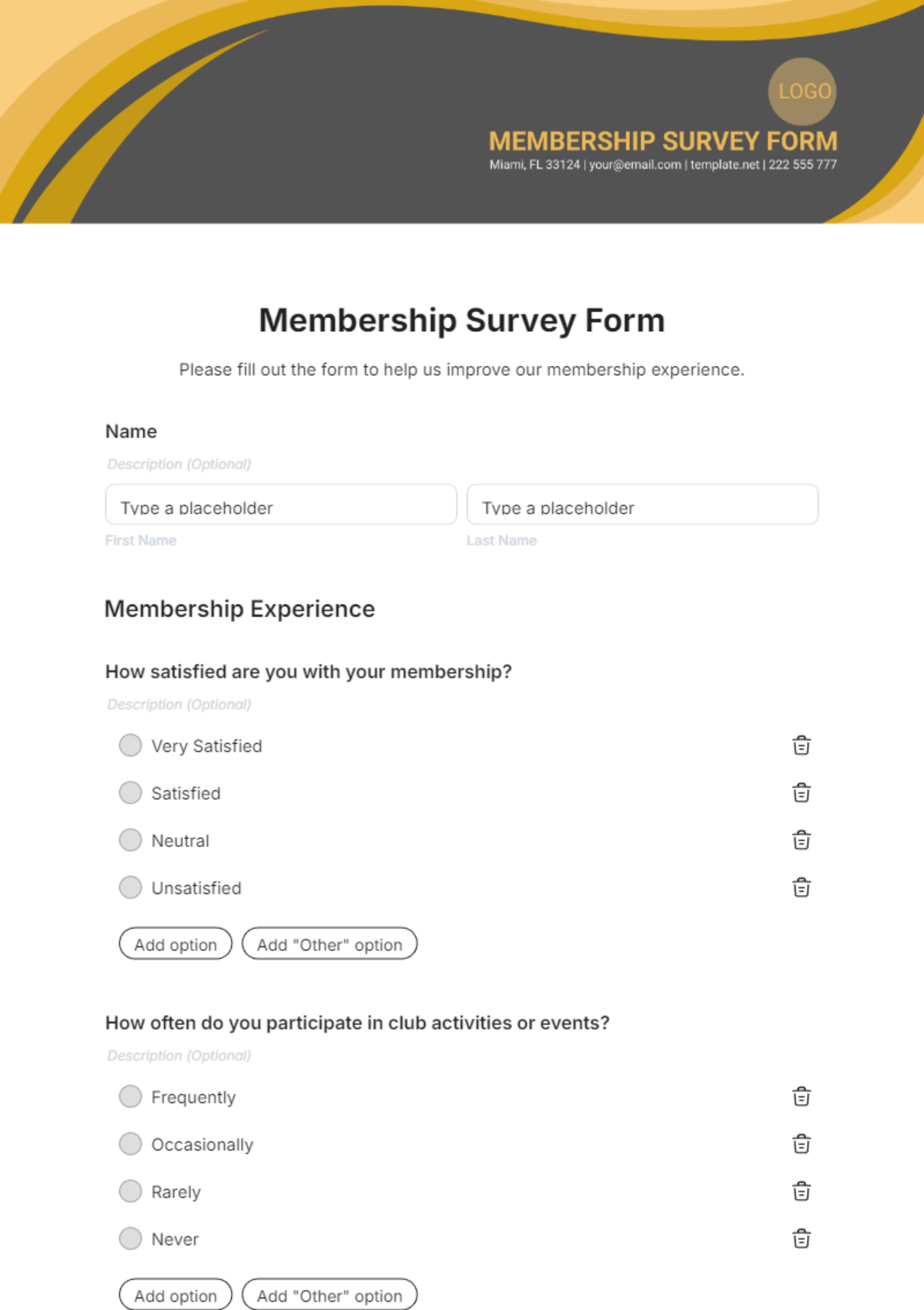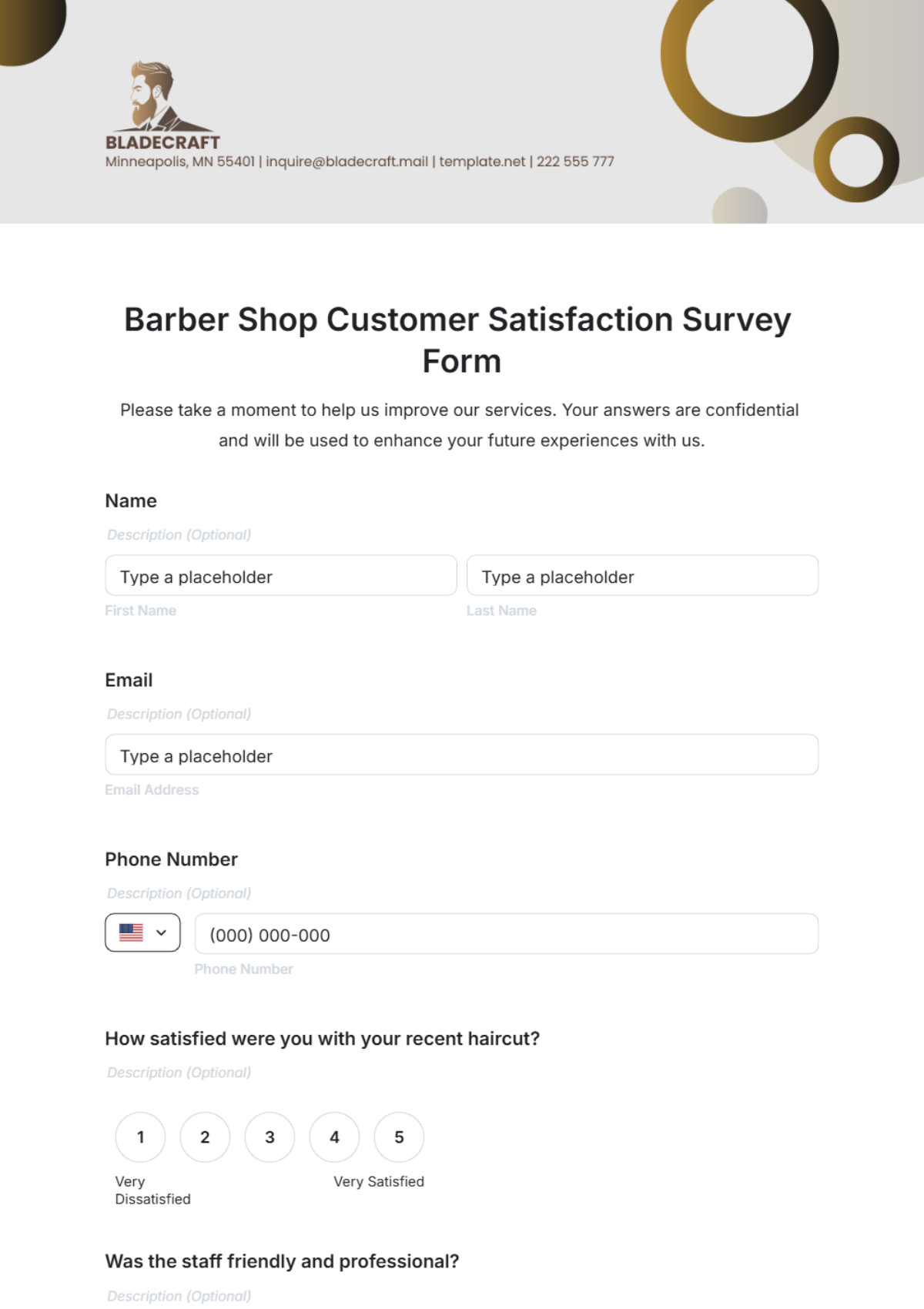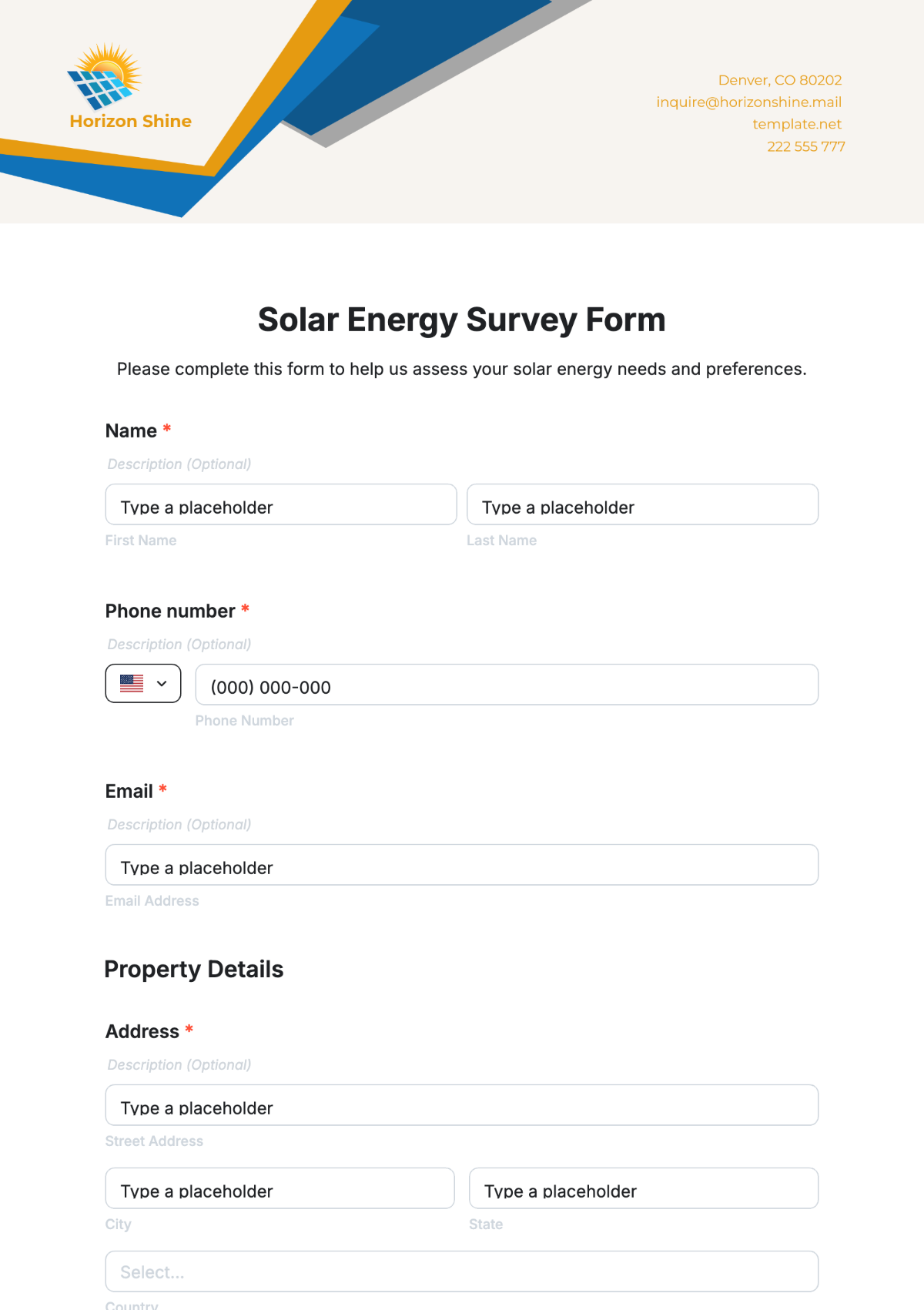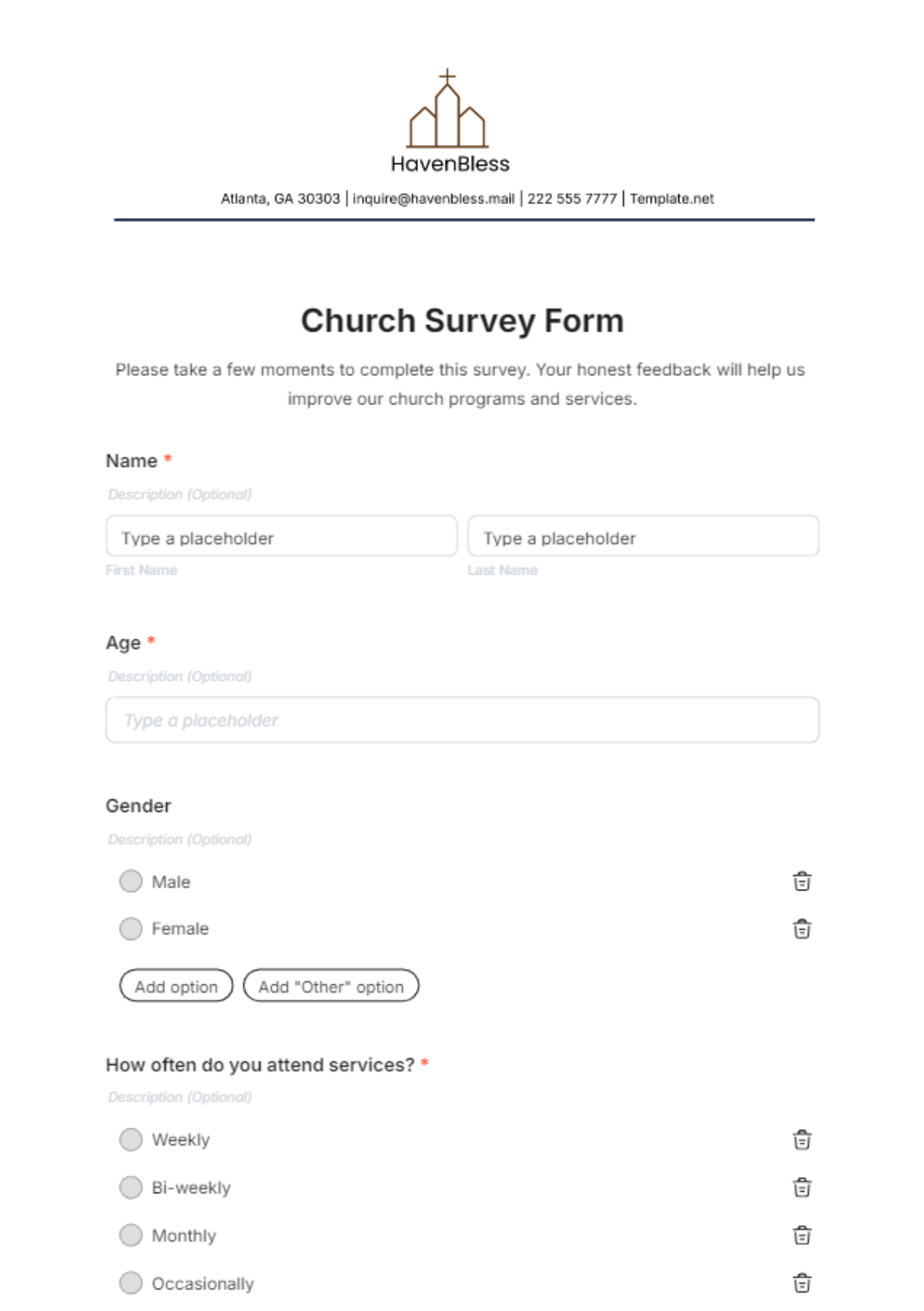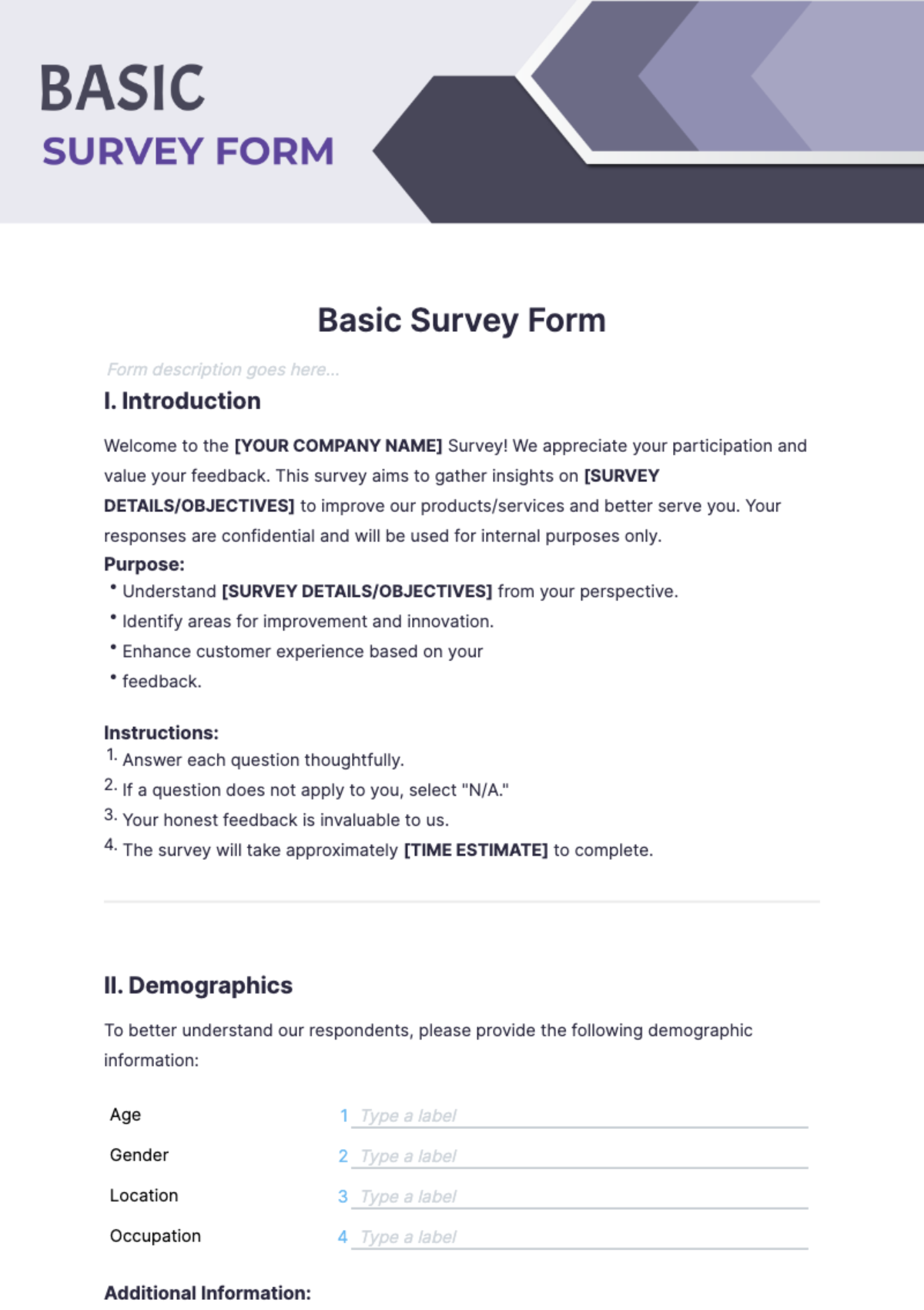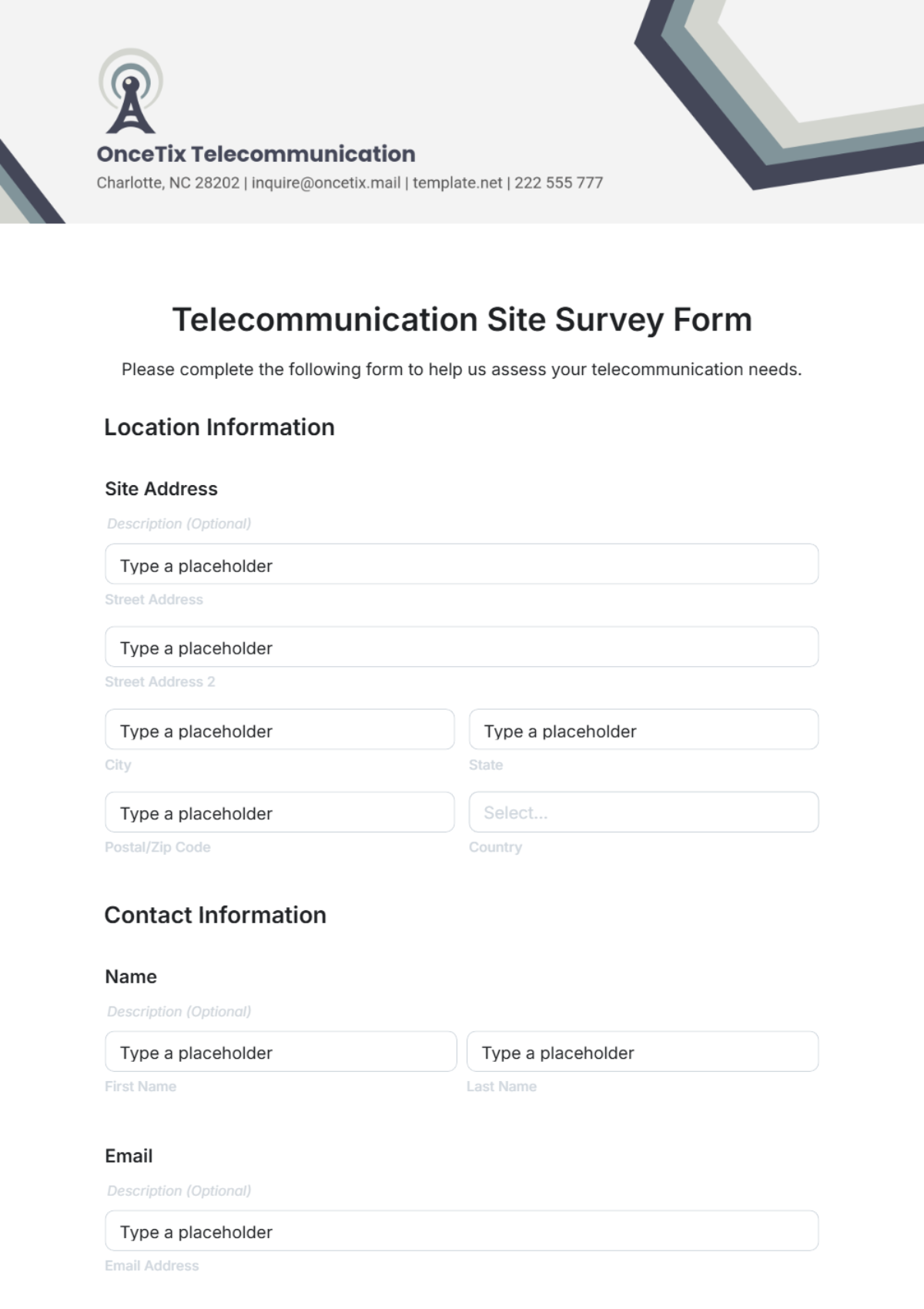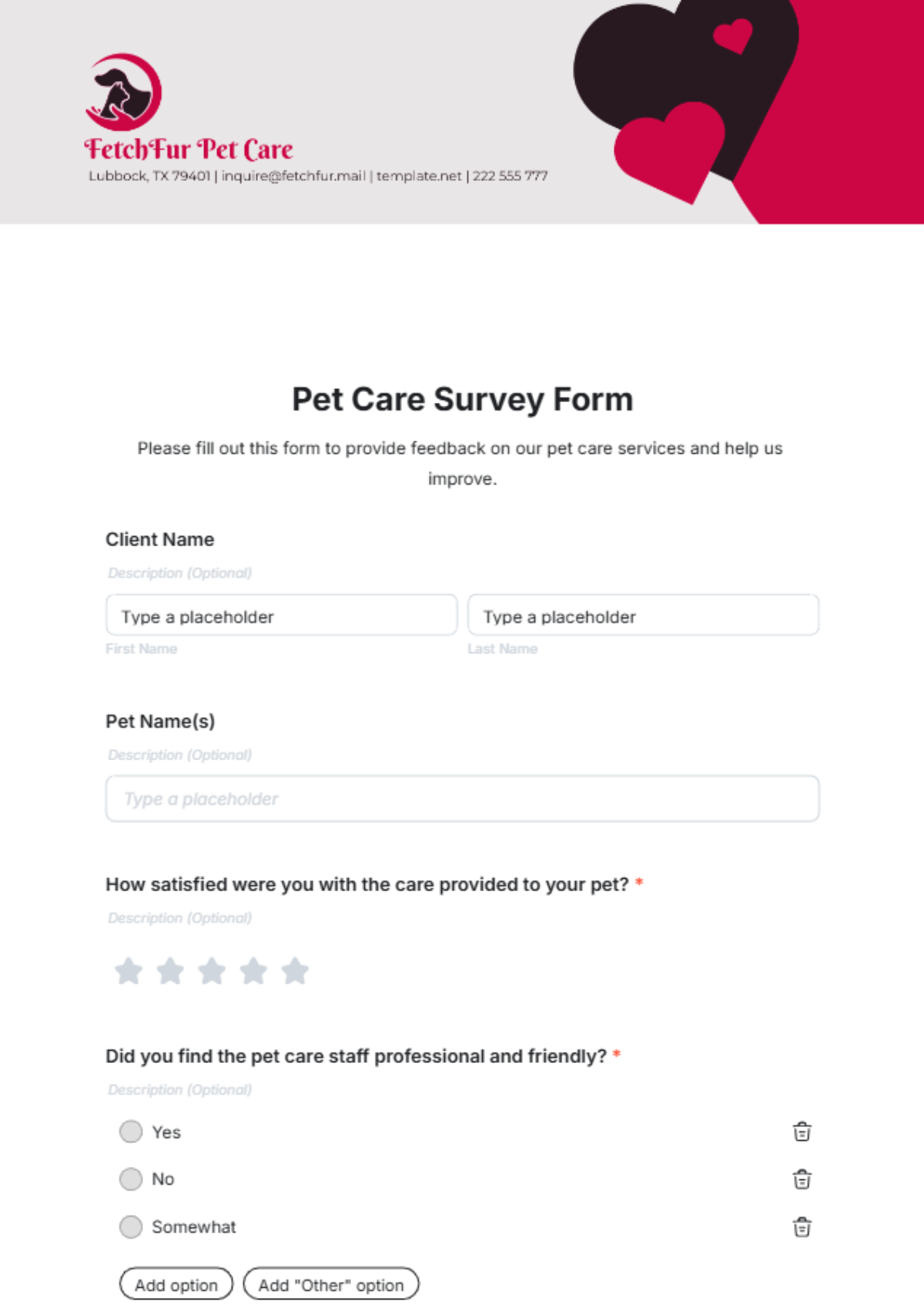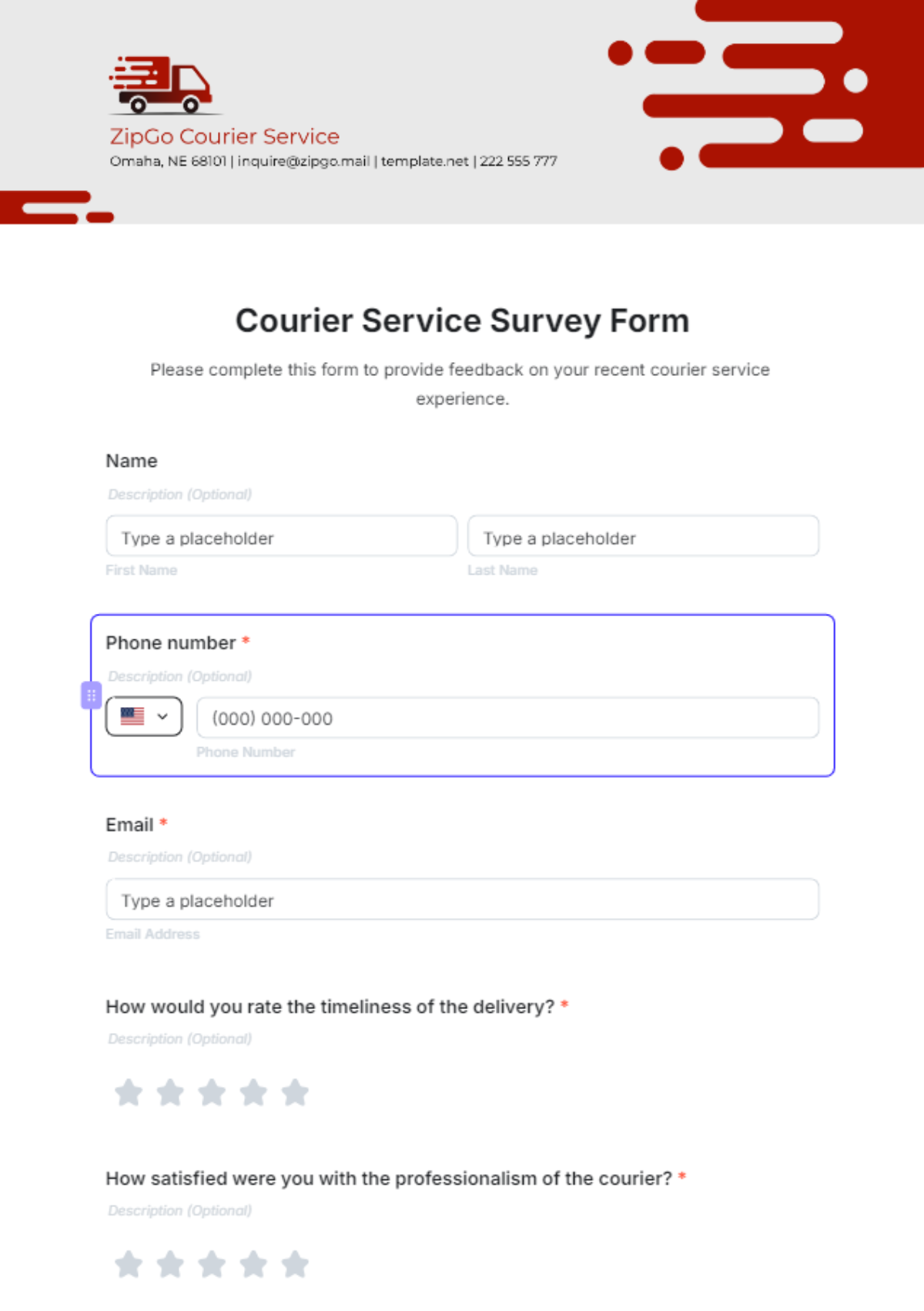Survey Paths Descriptive Research
Prepared By: [YOUR NAME]
Date: [DATE]
I. Introduction
The purpose of this research is to investigate the methodology and application of descriptive research through the use of survey paths. Descriptive research aims to characterize a population or phenomenon by detailing the relationships between variables such as opinions, behaviors, and demographics. The study focuses on how different sequences of questions, driven by respondent answers, can provide richer, more nuanced insights.
II. Methodology
This section provides a comprehensive overview of the survey design, sampling methods, and data collection processes employed in this research.
A. Survey Design
Question Types: The survey was designed with a combination of closed-ended questions (e.g., multiple-choice, Likert scales) and open-ended questions (e.g., short answer, essay).
Question Sequencing: Questions were structured to flow logically, with each question building on prior responses. For example, if a respondent indicated frequent use of social media, subsequent questions probed into specific platforms and usage patterns.
B. Sampling Methods
Population: Individuals who are 18 years of age or older were specifically chosen as the target group to encompass a broad spectrum of viewpoints and perspectives.
Sampling Technique: A stratified random sampling method was employed to guarantee representation among important demographics including age, gender, and geographic location.
Sample Size: A sample size of 500 respondents was chosen to provide statistical significance and reliability in the results.
C. Data Collection Processes
Distribution Channels: Surveys were distributed via email and social media platforms, such as Facebook and Twitter, to reach a diverse audience.
Anonymity and Consent: Respondents were guaranteed anonymity and provided their informed consent via an initial consent form before beginning the survey.
III. Survey Paths
Survey paths involve different sequences of questions based on respondents' answers, providing a tailored survey experience.
A. Initial Screening Questions
What is your age"
What is your gender?
In which city do you currently reside?
Purpose: These particular questions were used to categorize the respondents into various relevant groups, which allowed for a more detailed and comprehensive analysis to be conducted at a later stage.
B. Primary Variable Questions
Example Path for Internet Usage
Question: How often do you use the internet?"
Daily: Follow-up questions about online activities, such as "Which websites do you visit most frequently?" and "How many hours per day do you spend online?"
Occasionally: Follow-up questions about barriers to internet use, such as "What prevents you from using the internet more often?"
C. Follow-up and Clarifying Questions
For respondents indicating a strong interest in social media, additional questions such as "What motivates your social media use?" and "How does your use of social media impact your daily life?" were asked to gather detailed insights.
IV. Results
A. Demographic Distribution
Age Group
Age Range | Percentage |
|---|---|
18-24 | 20% |
25-34 | 35% |
35-44 | 25% |
45+ | 20% |
B. Behavioral Trends
Internet Usage Frequency Char
V. Analysis
Age and Internet Usage: Younger respondents (18-34) were more likely to use the Internet daily (70%) compared to older age groups (35-44: 50%, 45+: 40%). This suggests a correlation between age and frequency of internet use, likely due to higher digital literacy among younger individuals.
Gender and Social Media Preferences: Female respondents preferred social media platforms like Instagram (45%) and Facebook (35%), while male respondents showed a preference for Twitter (40%) and LinkedIn (30%). This indicates distinct preferences in social media usage between genders.
VI. Conclusion
This research demonstrates the benefits of using survey paths in descriptive studies. The adaptive questioning approach enhances data richness by tailoring questions based on previous answers, leading to deeper insights into relationships between variables like age, gender, and behavior. This method supports businesses in crafting targeted marketing strategies and aids researchers in understanding complex interactions. Future studies should explore additional factors such as cultural and socioeconomic influences to provide even more comprehensive insights into how various factors shape opinions and behaviors.
VII. Appendices
Survey Questionnaires: The complete set of survey questions used for this research can be found in Appendix 1.
Raw Data: The raw data collected during the survey is available in a separate file, detailed in Appendix 2.
Technical Details: Technical aspects of the survey distribution and data analysis processes are documented in Appendix 3.
VIII. References
Smith, J. A., & Brown, L. M. (2051). Principles of survey research.
Johnson, M. T. (2050). Analyzing survey paths for descriptive research. Journal of Research Methods, 15(2), 112-130.
American Statistical Association. (2059). Best practices for survey design.
